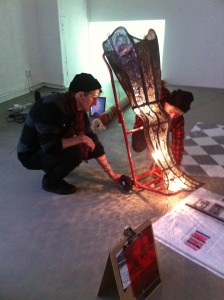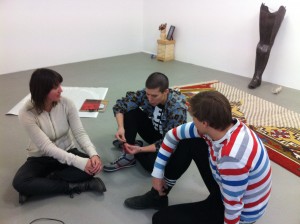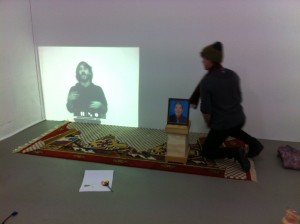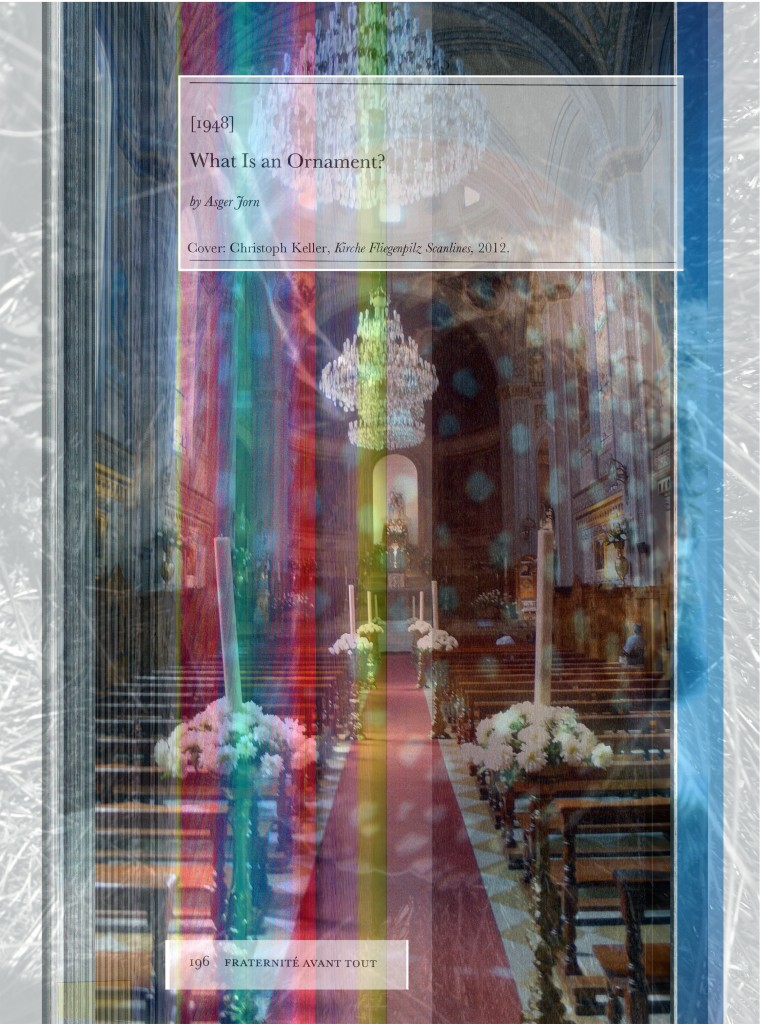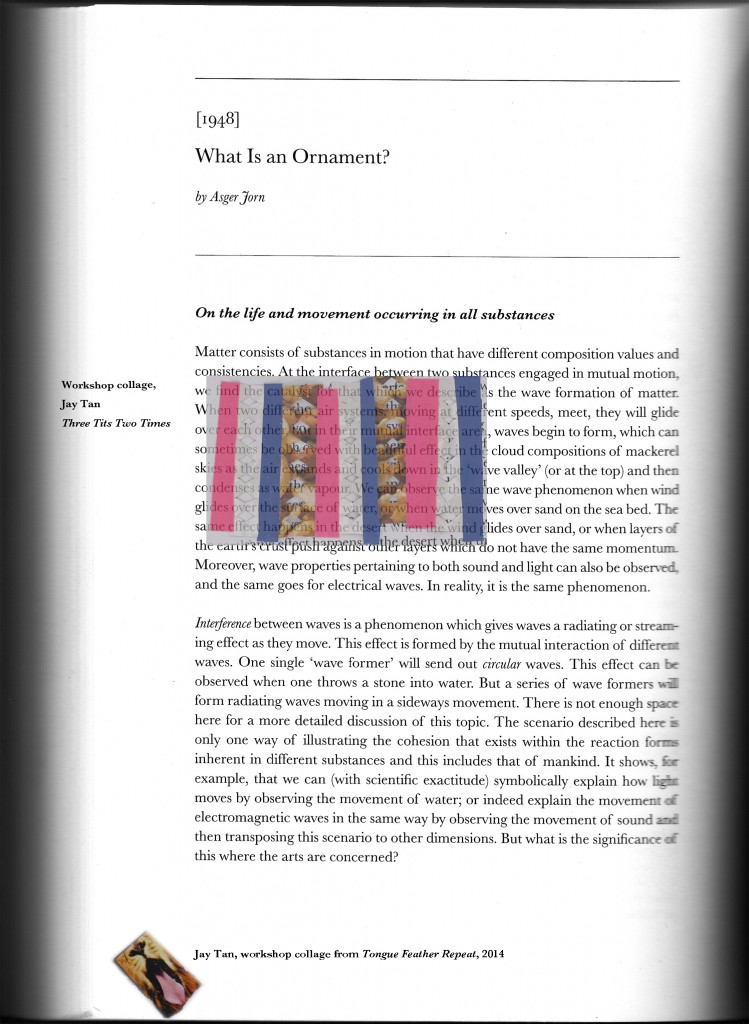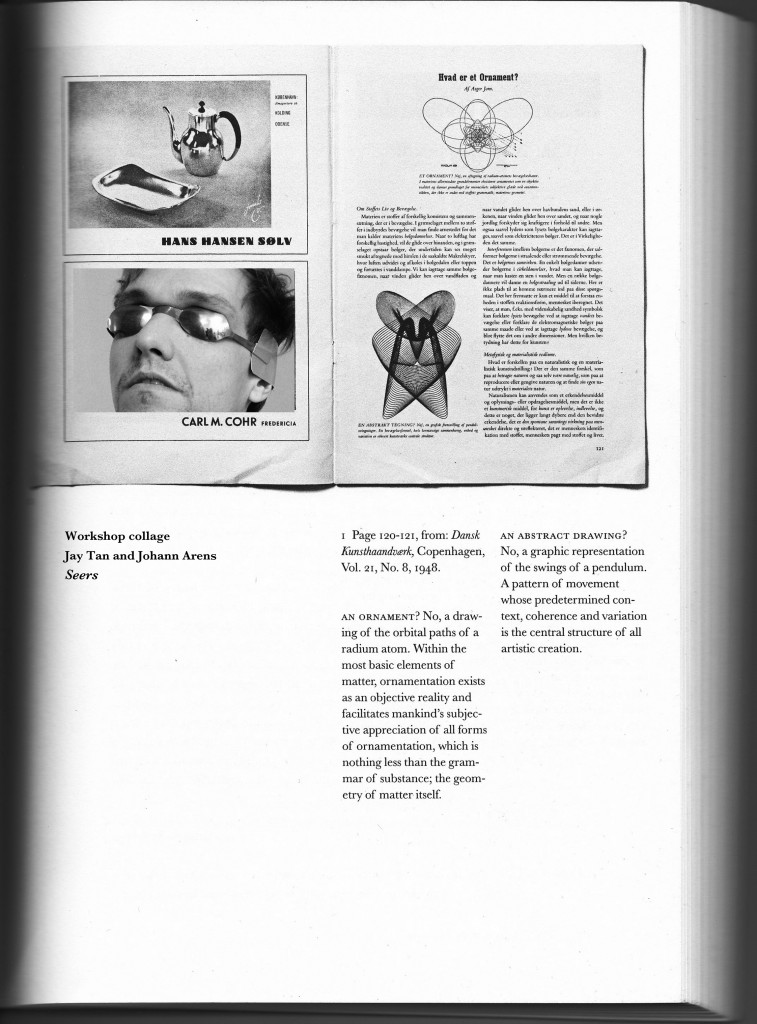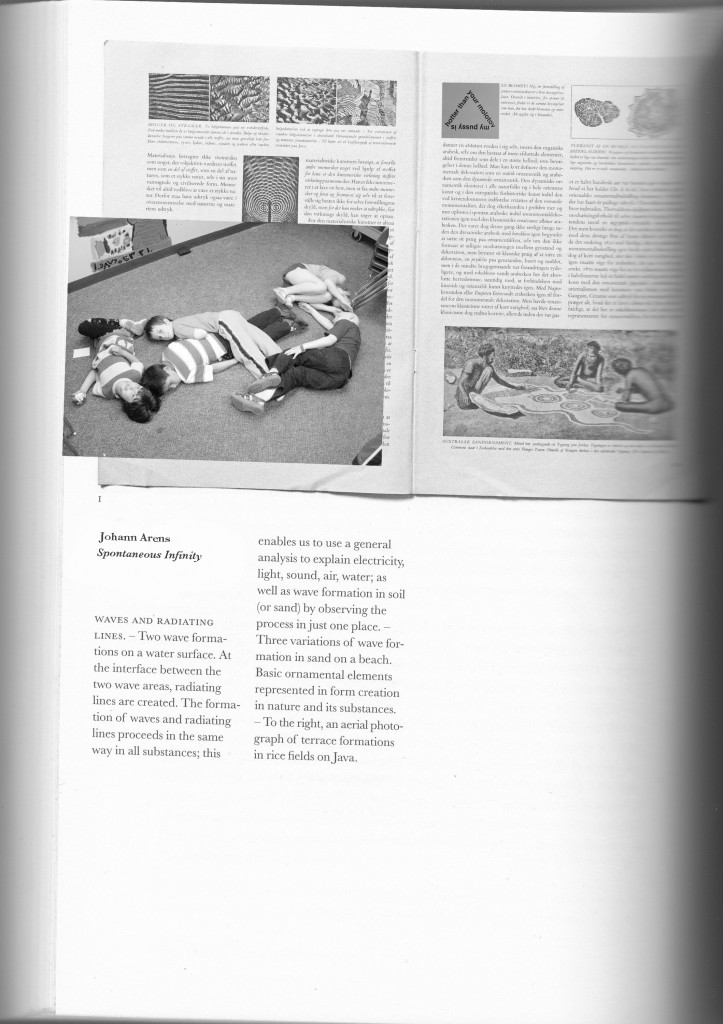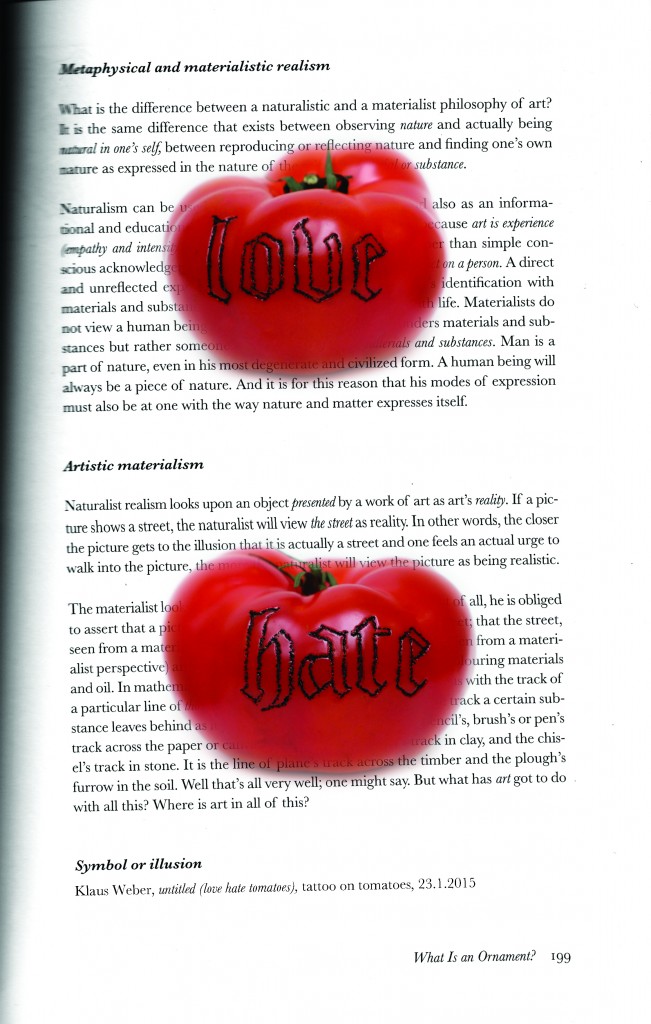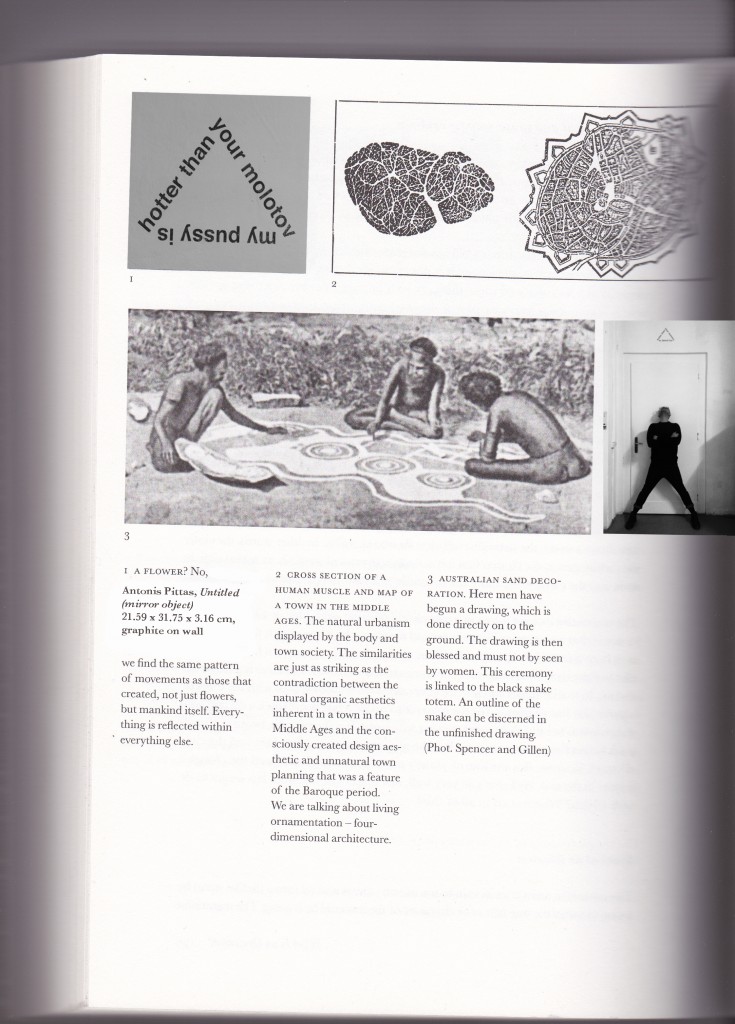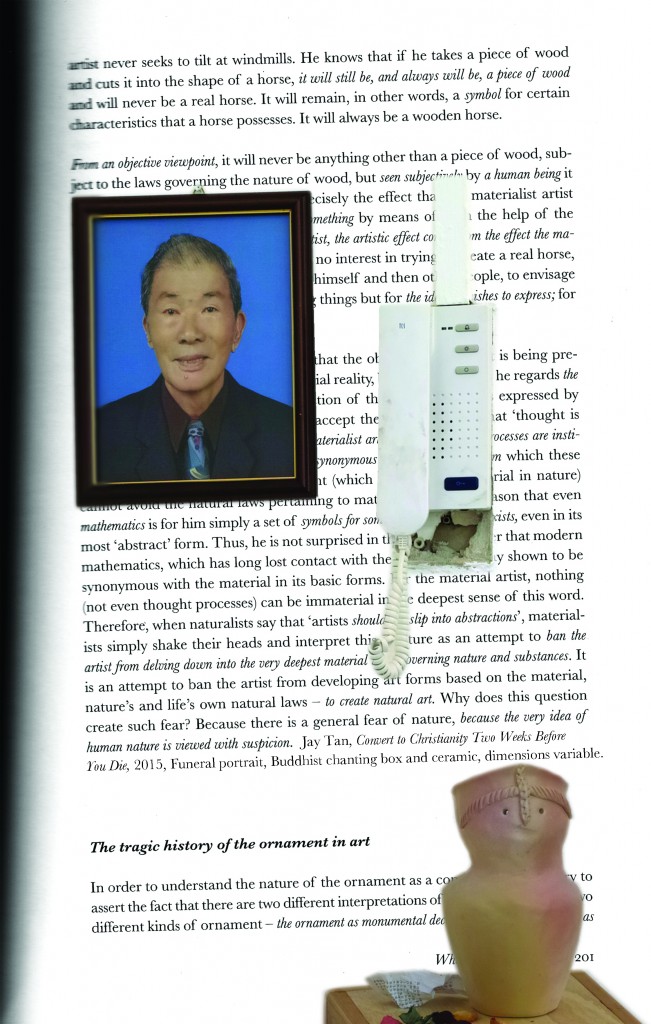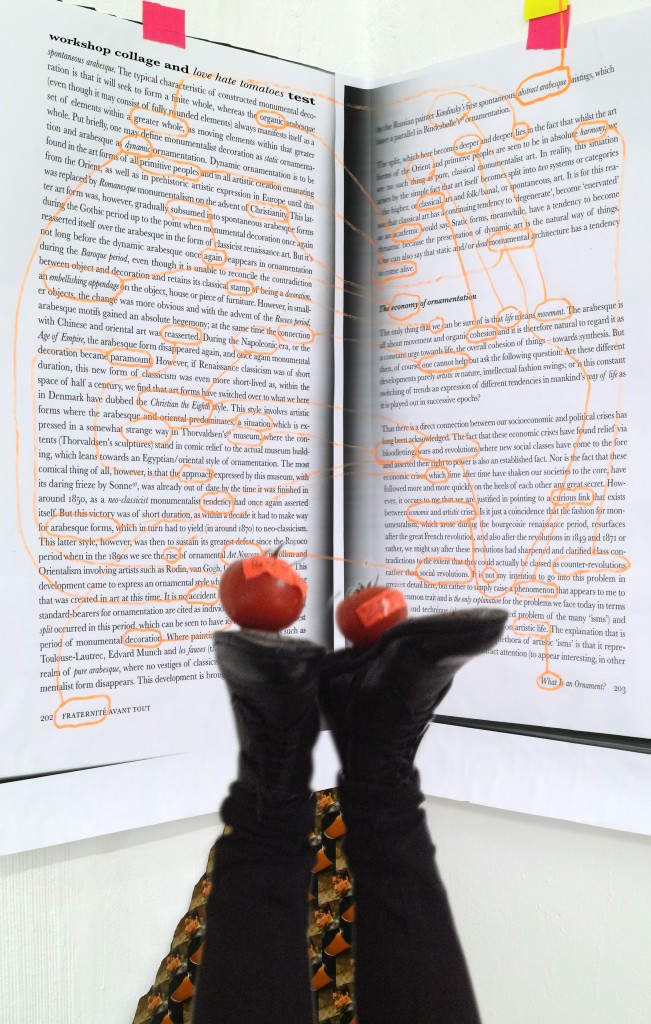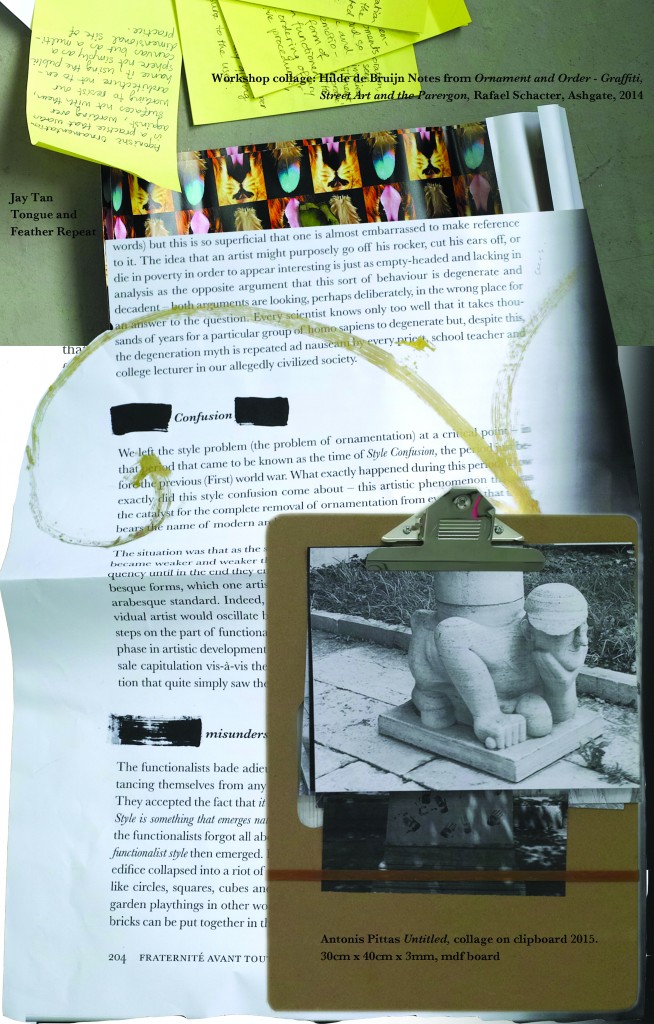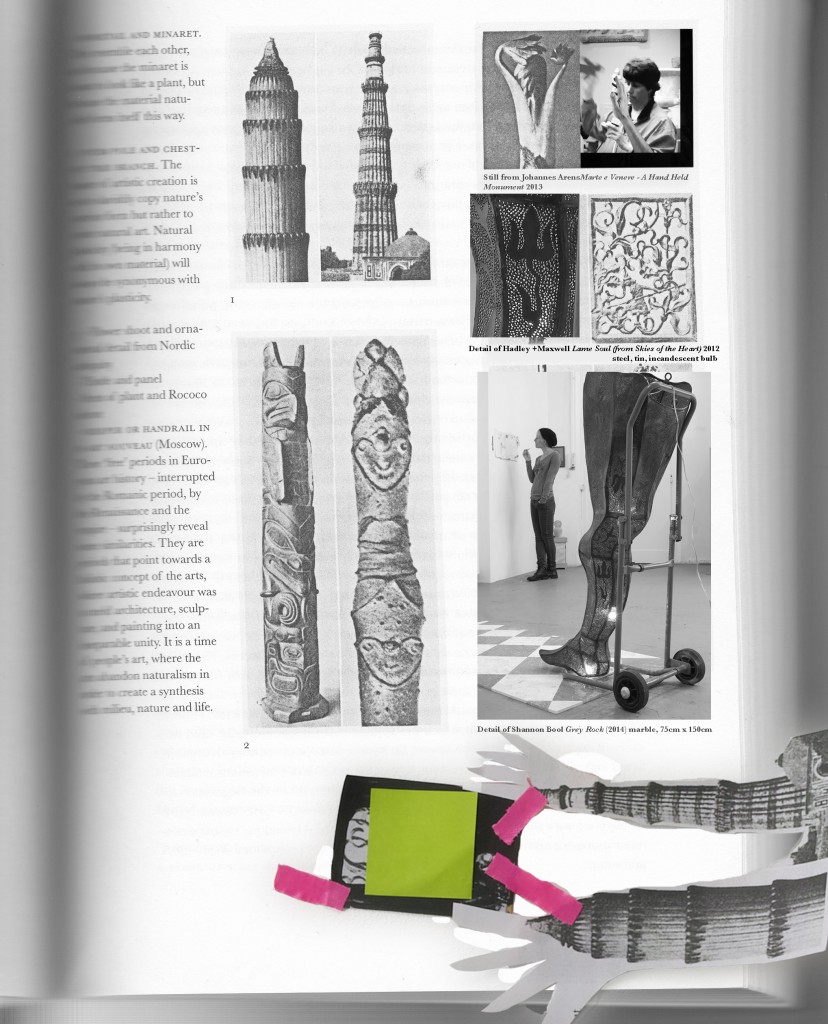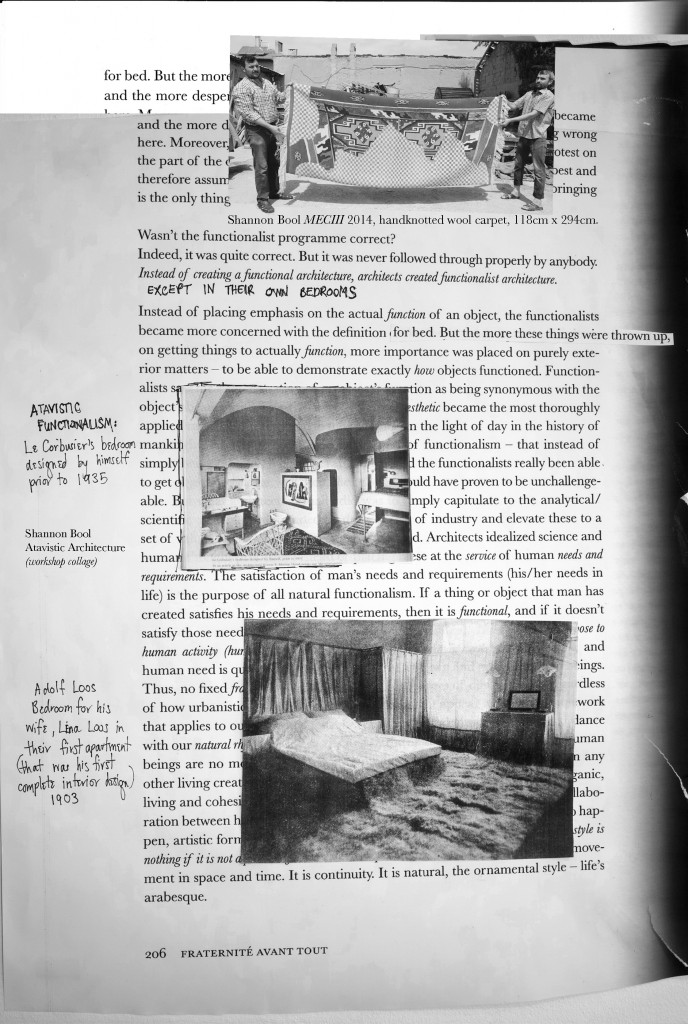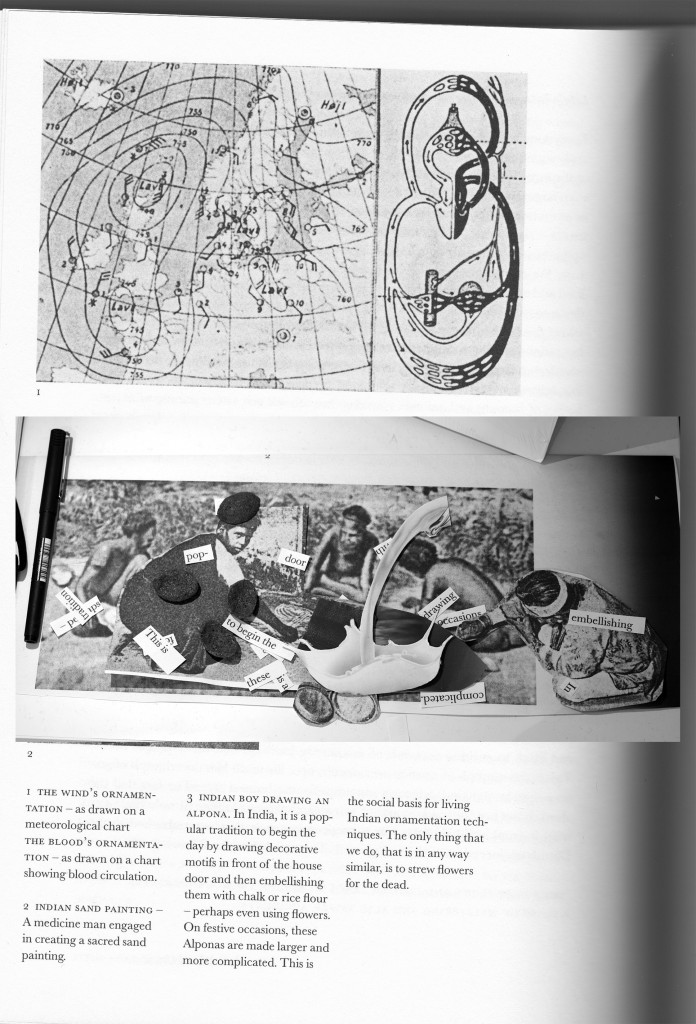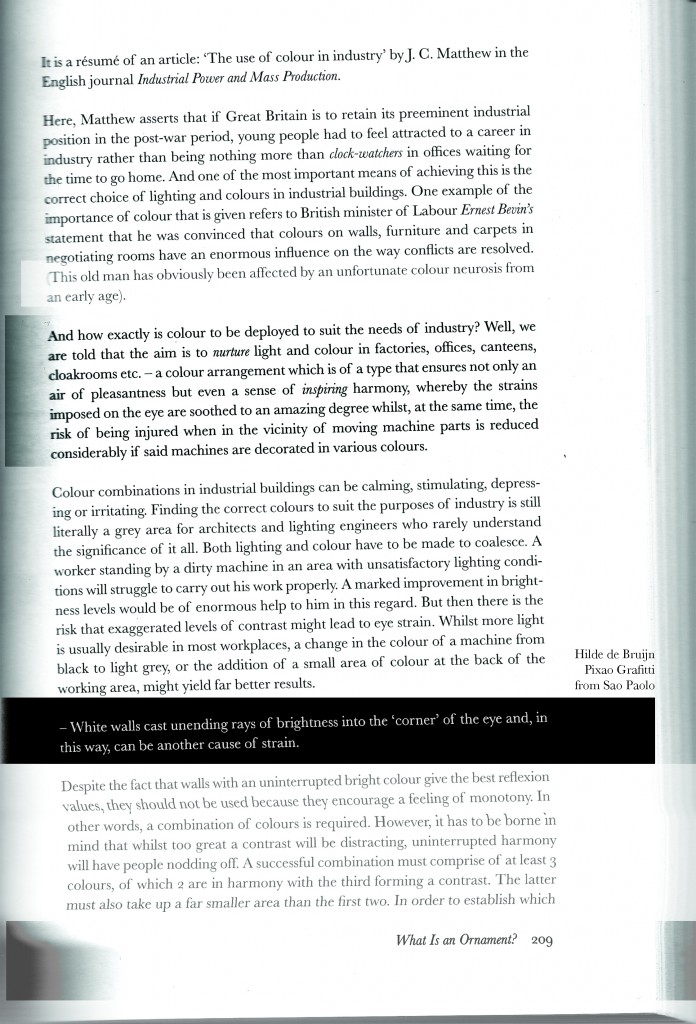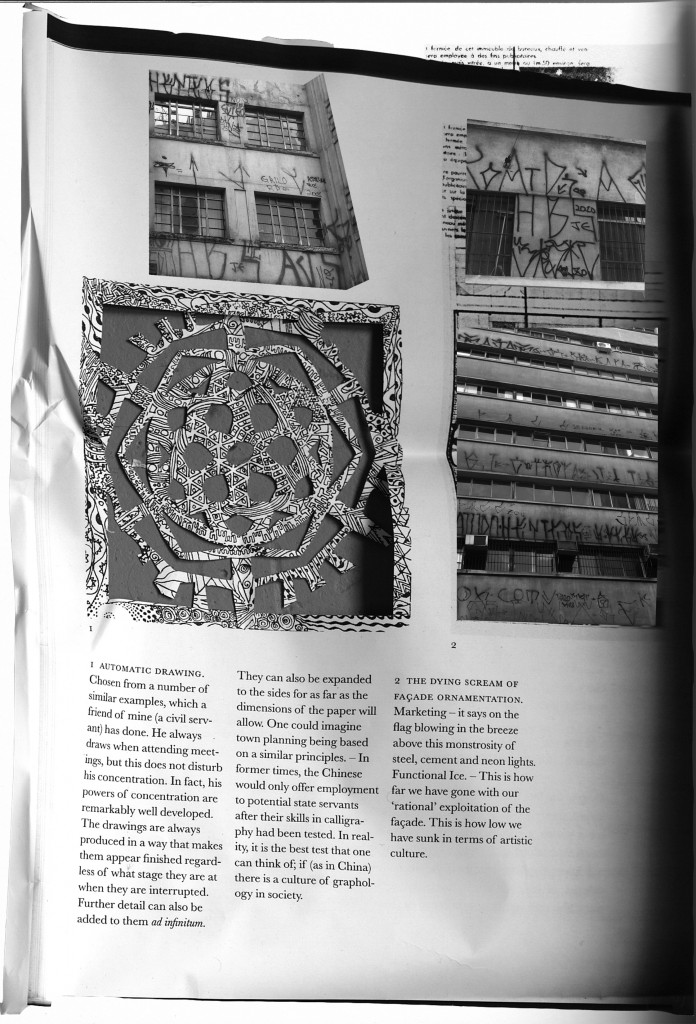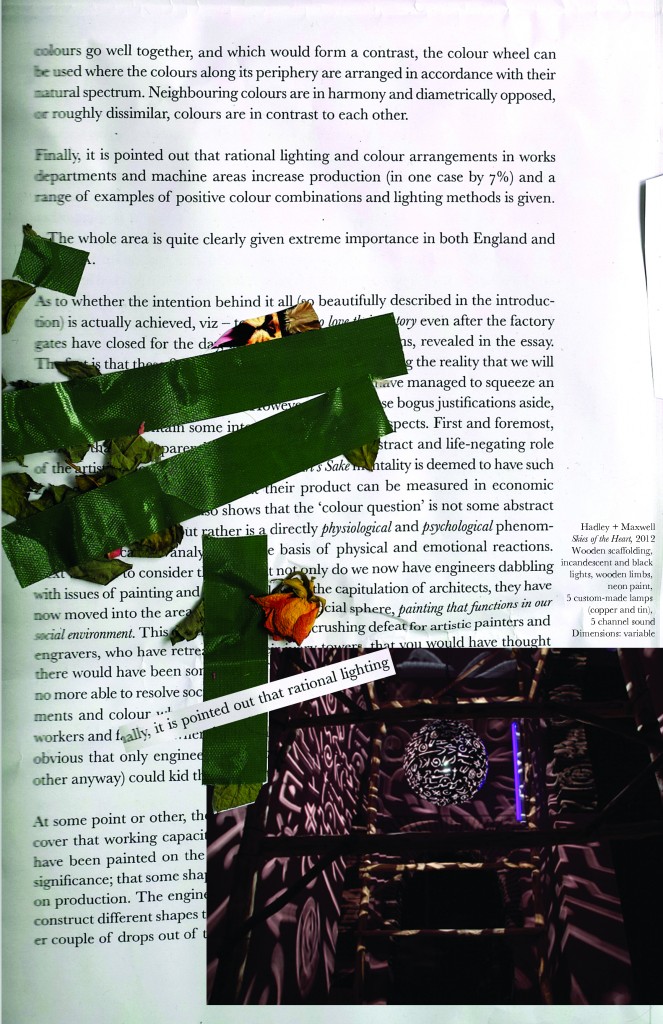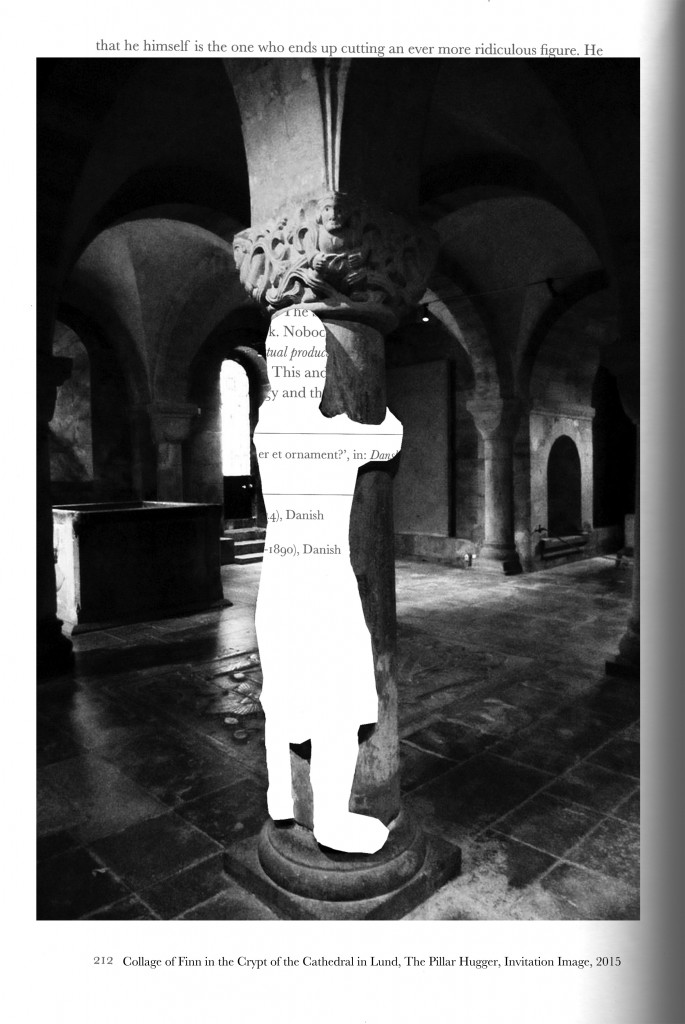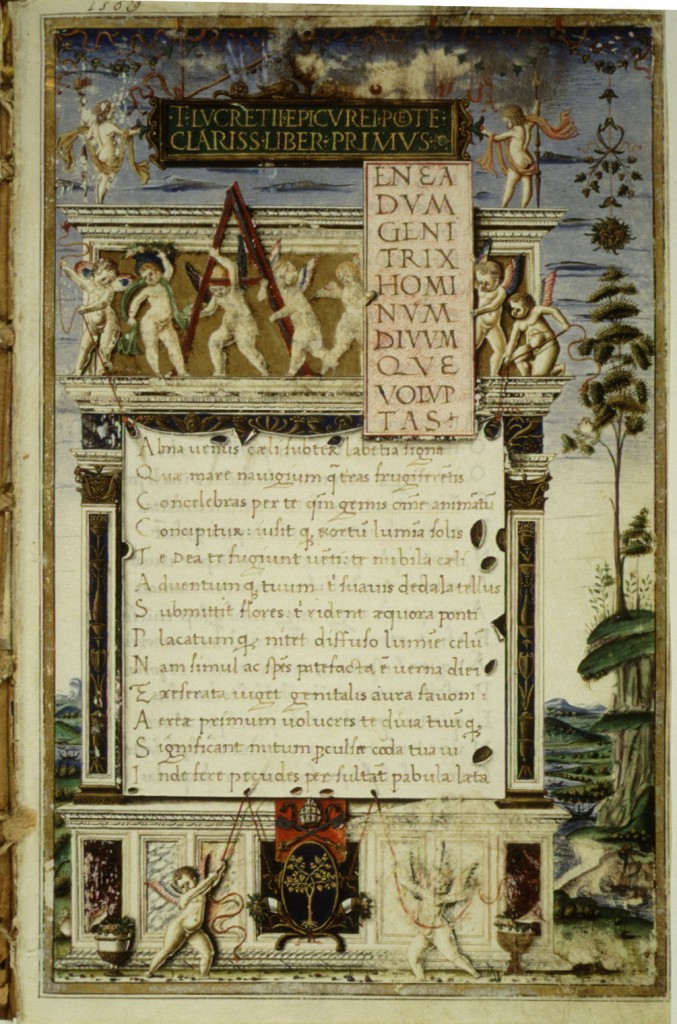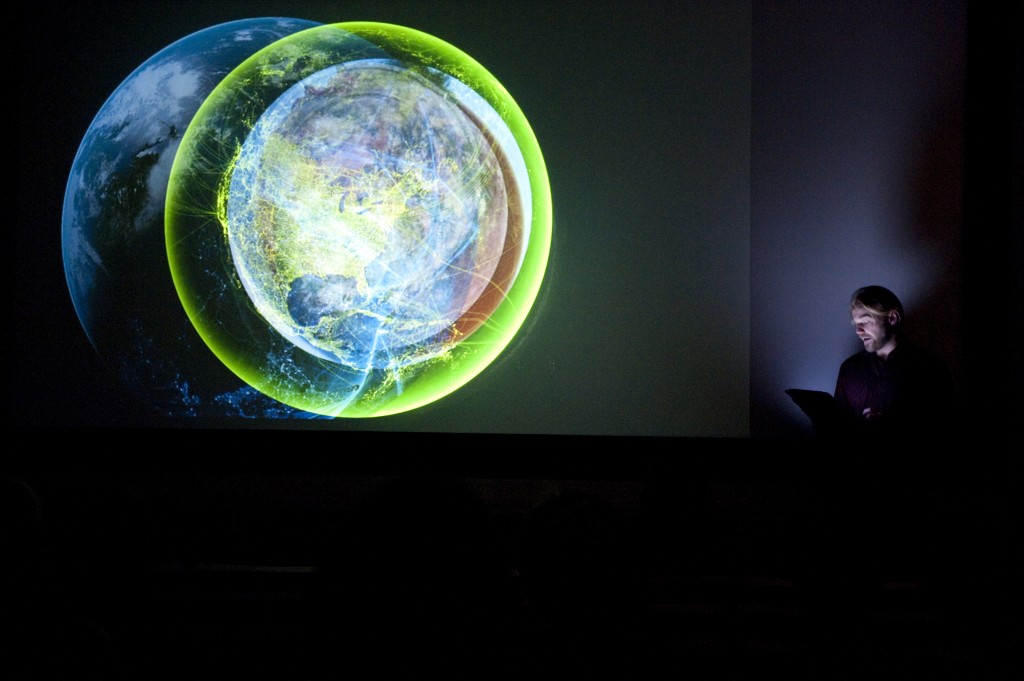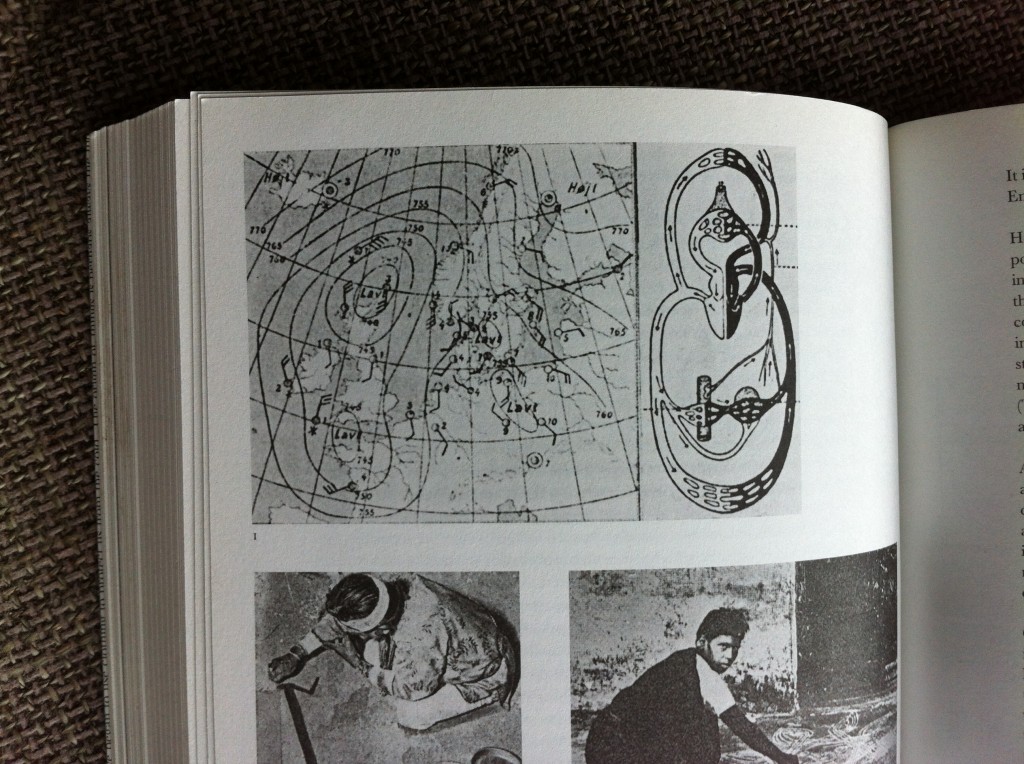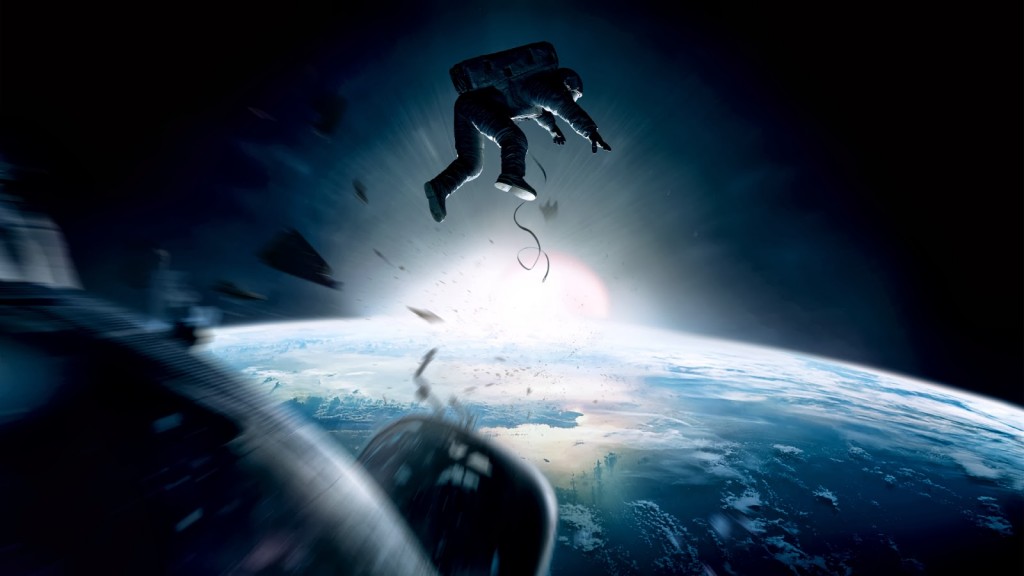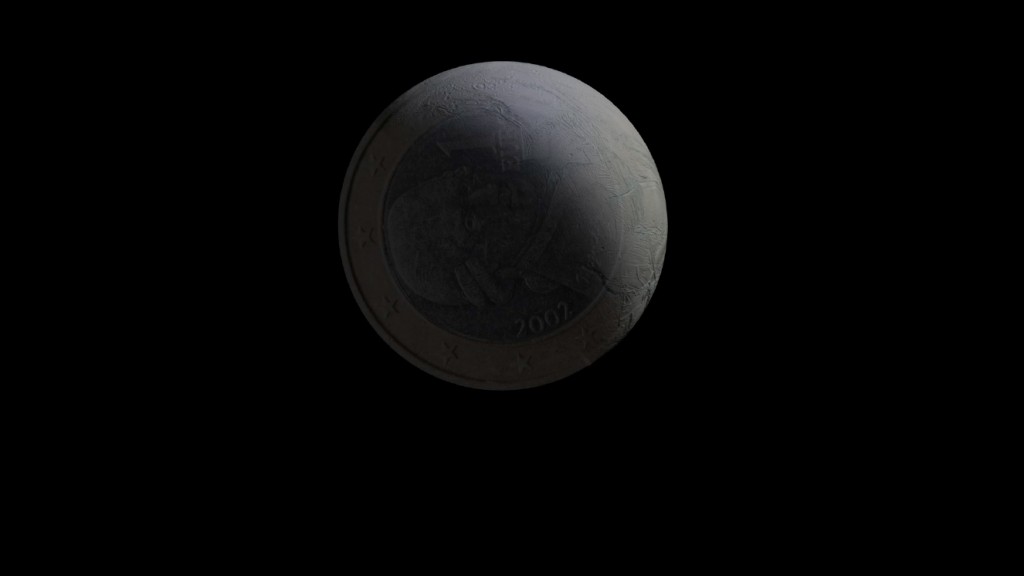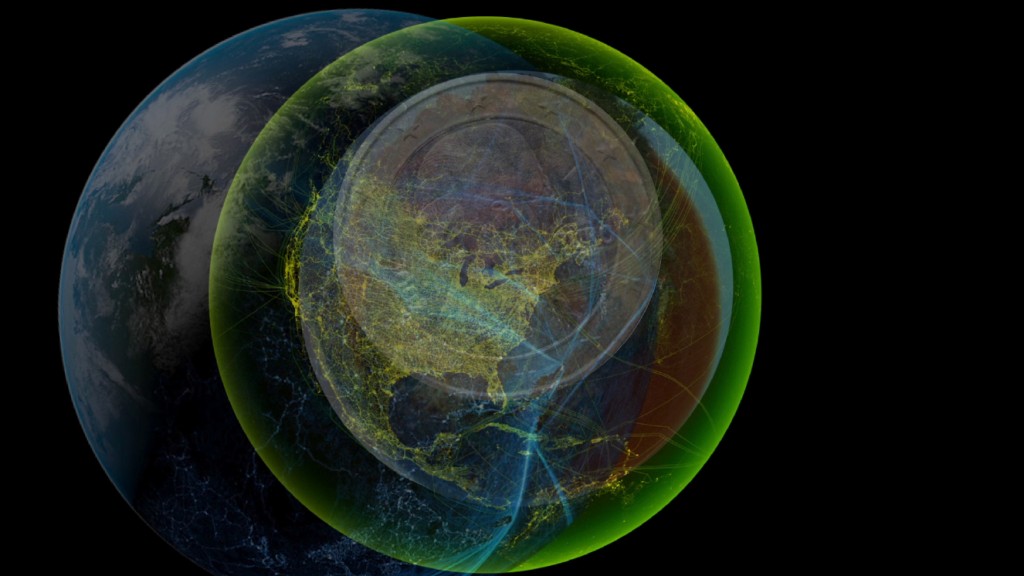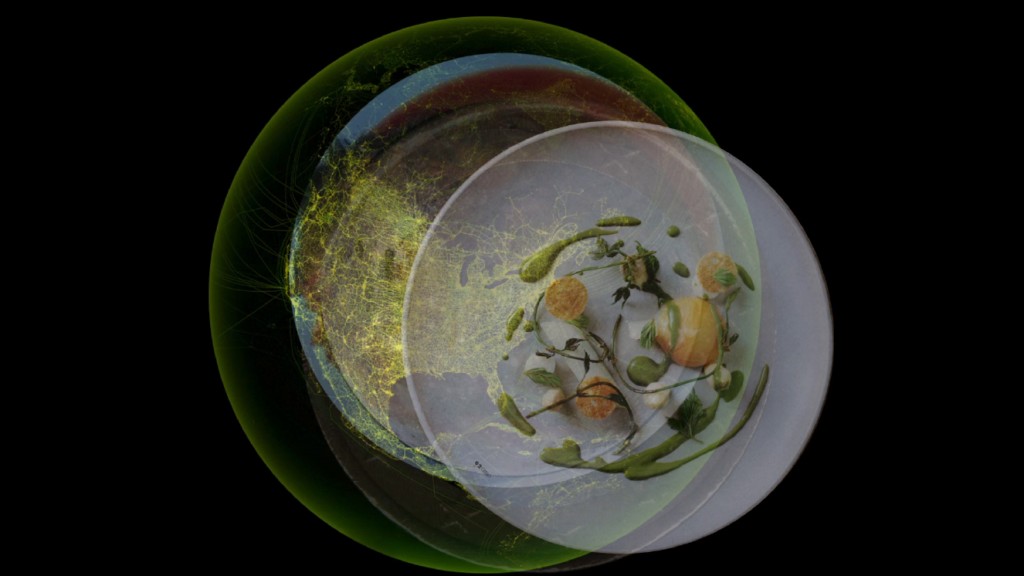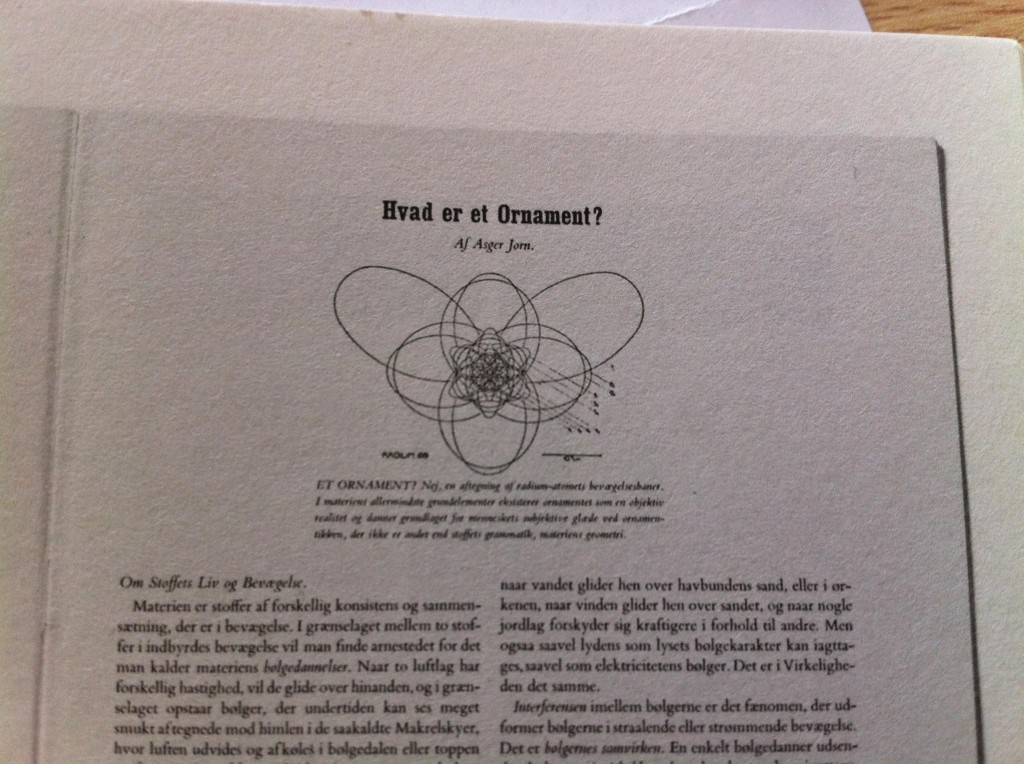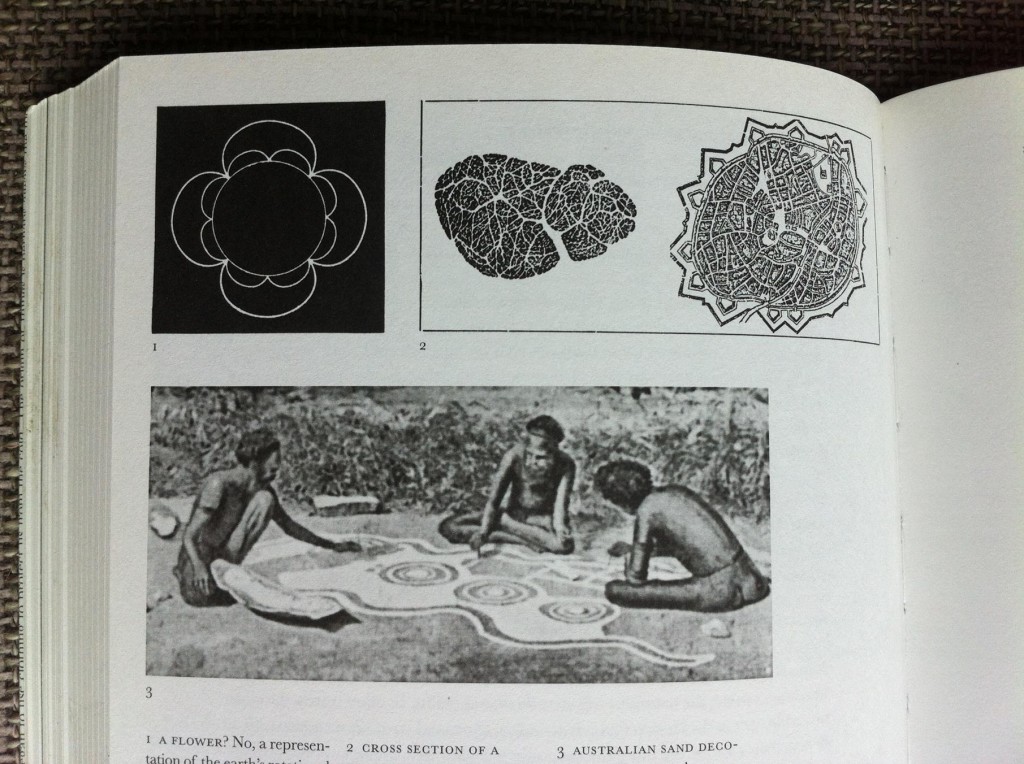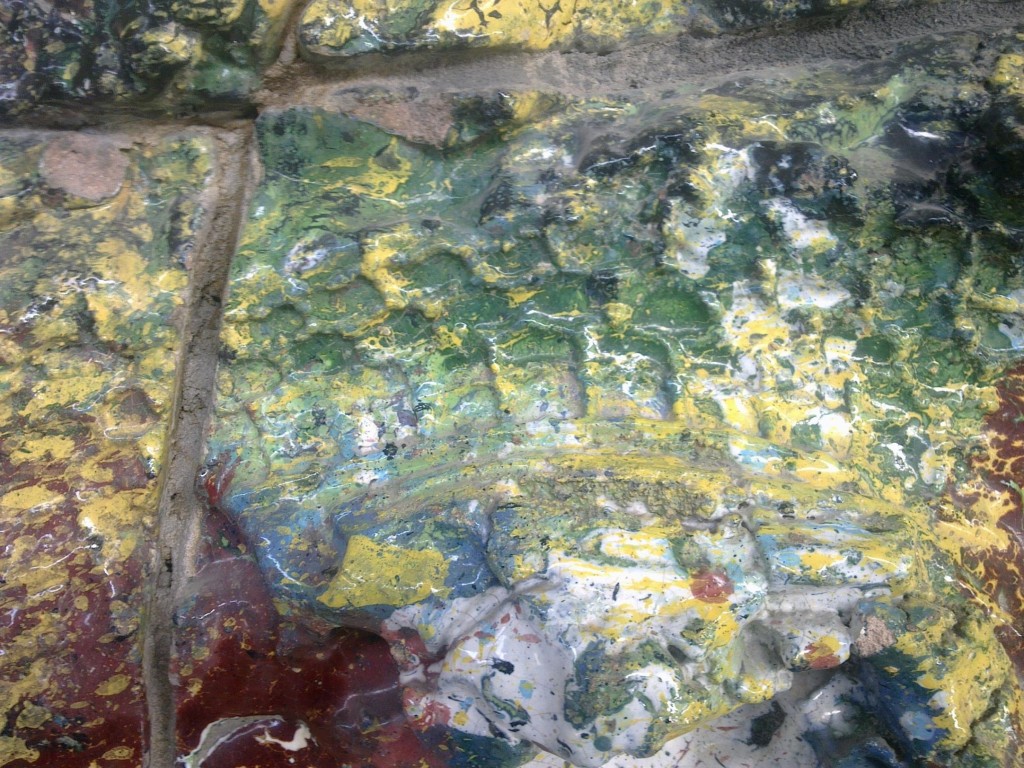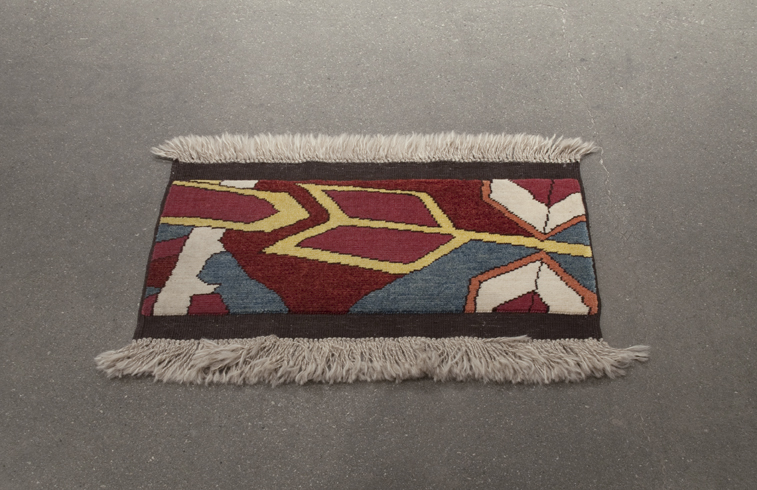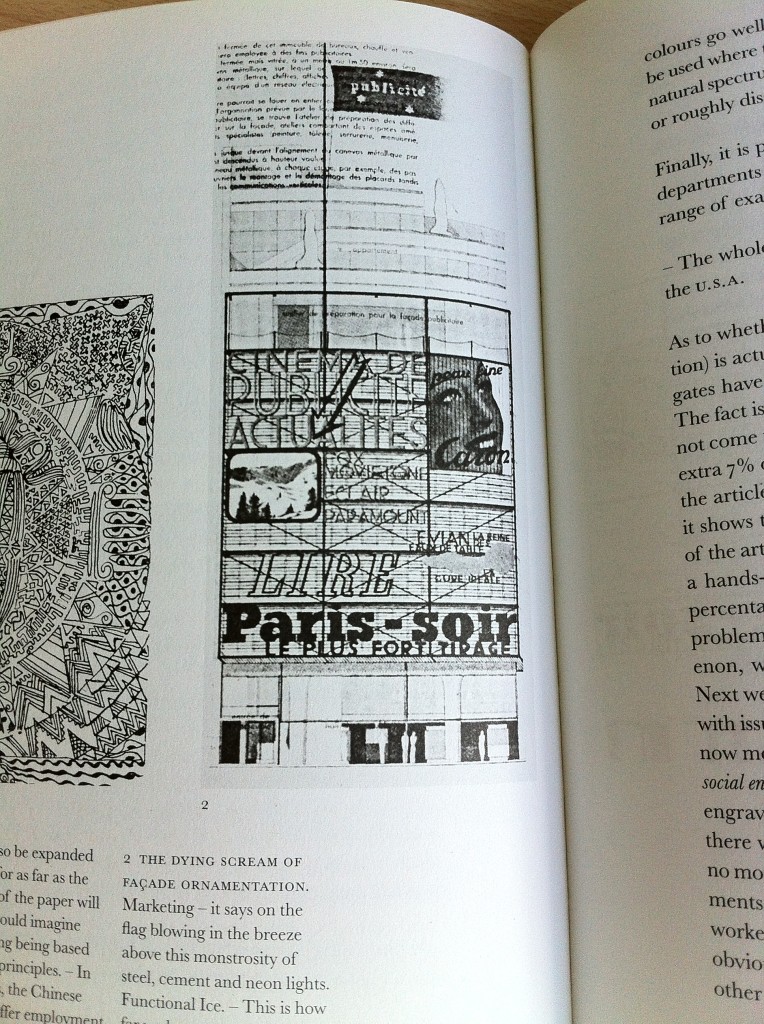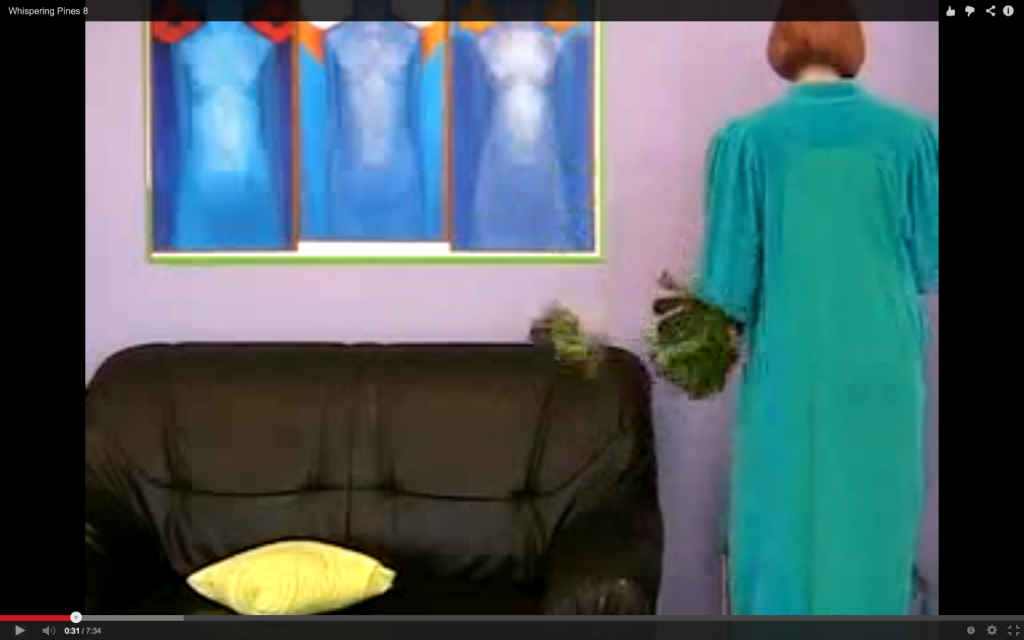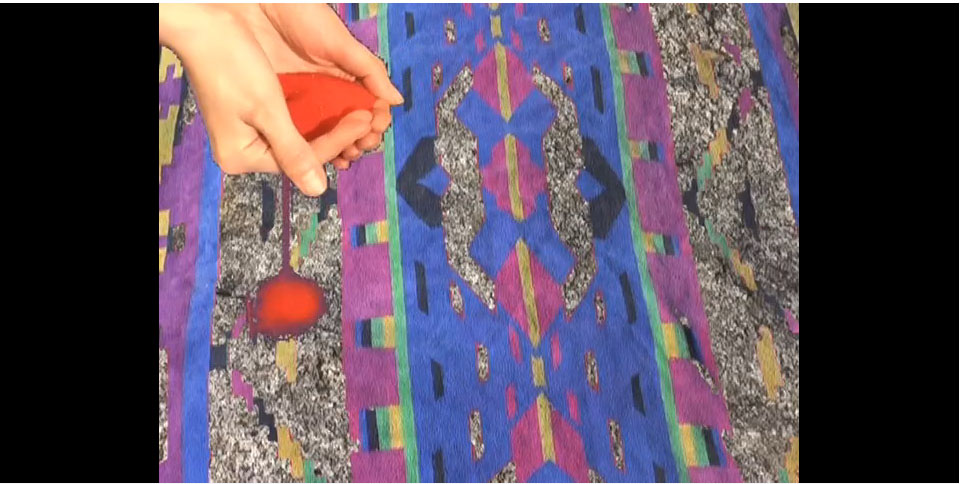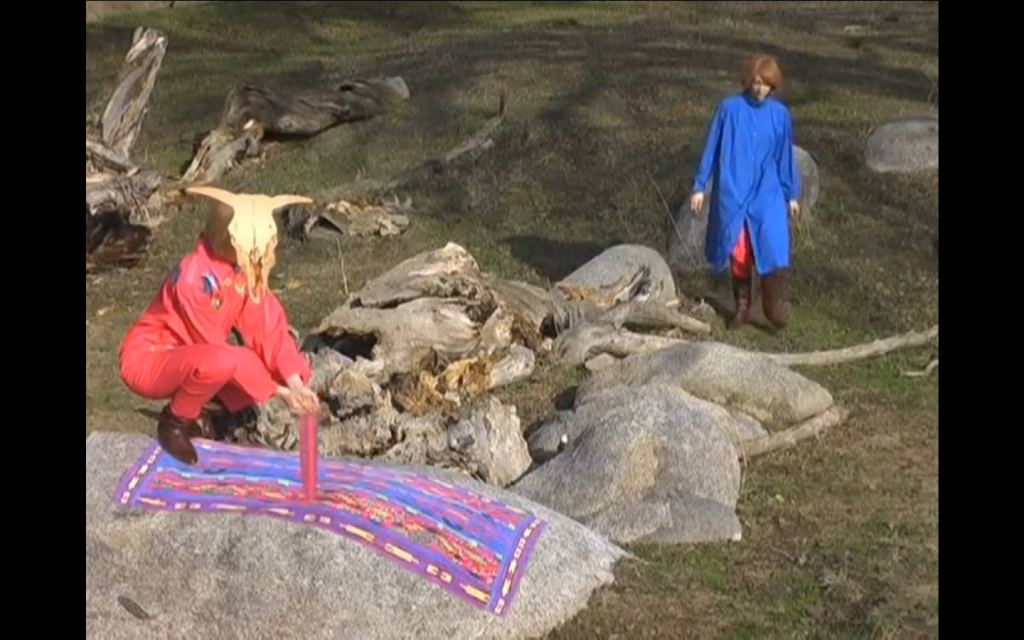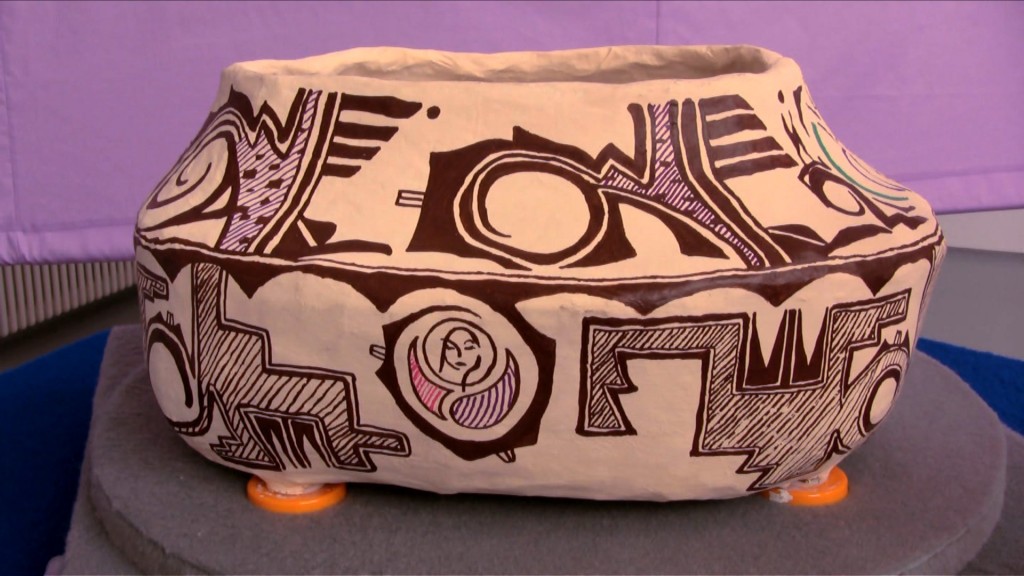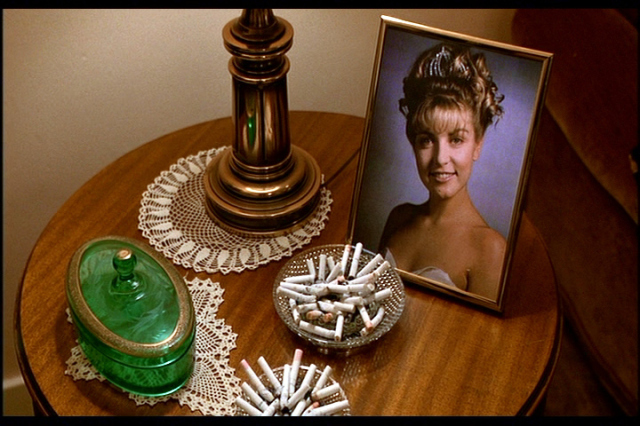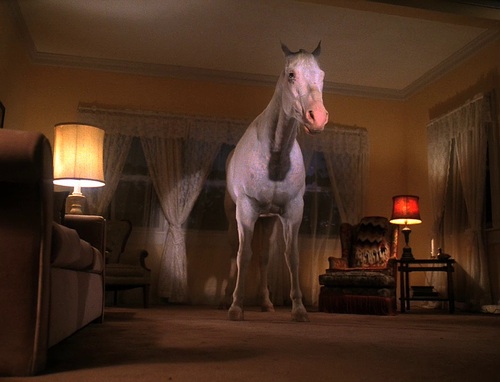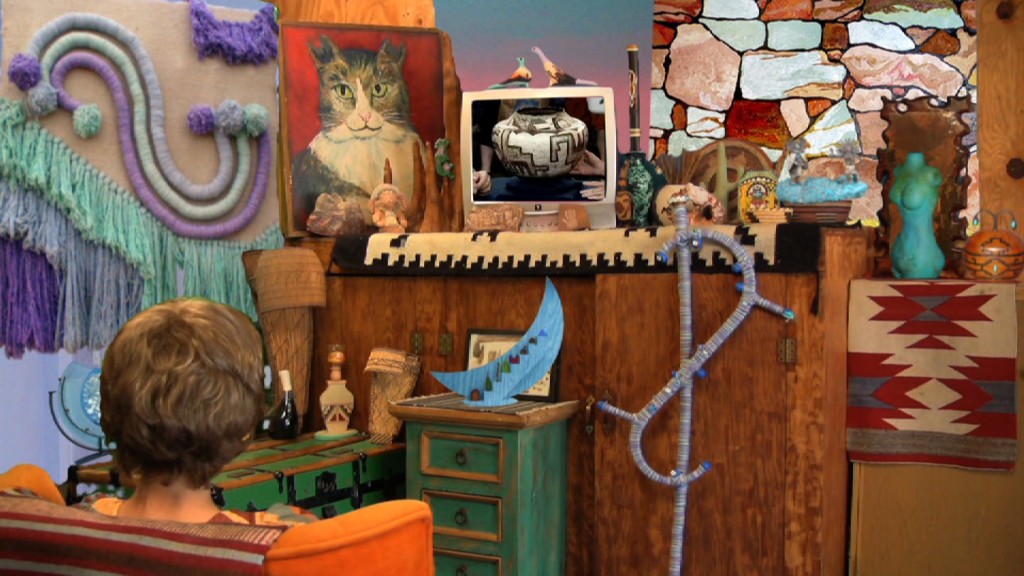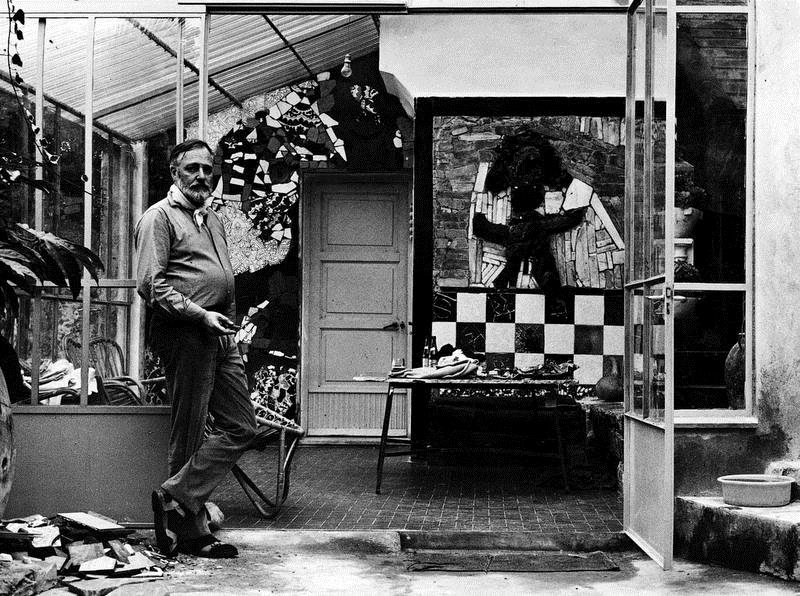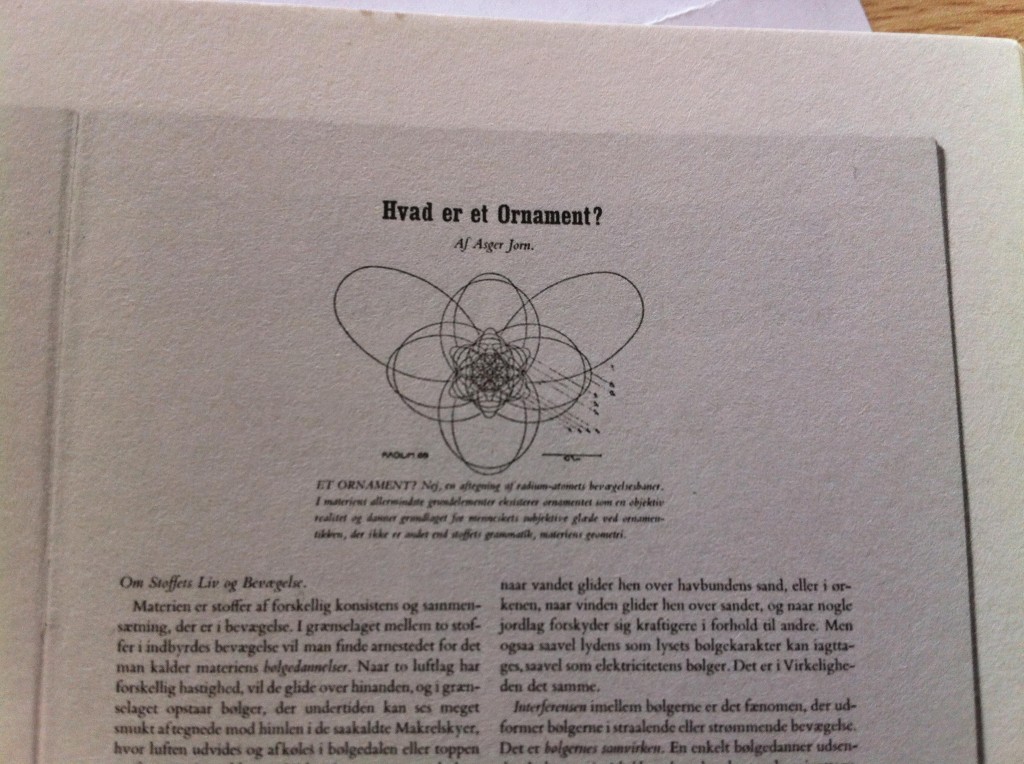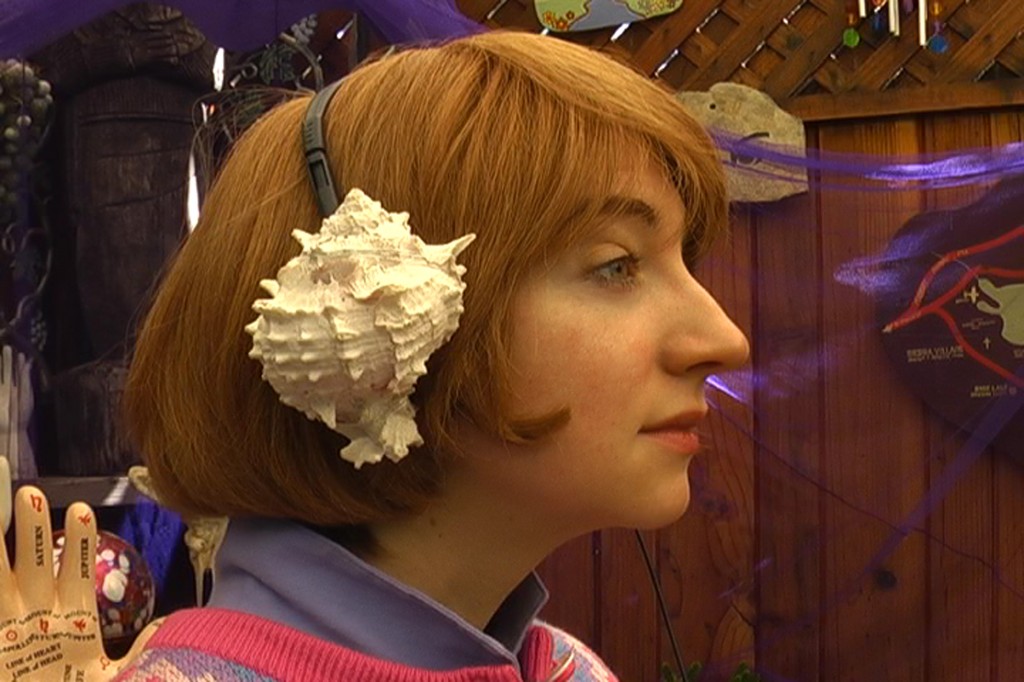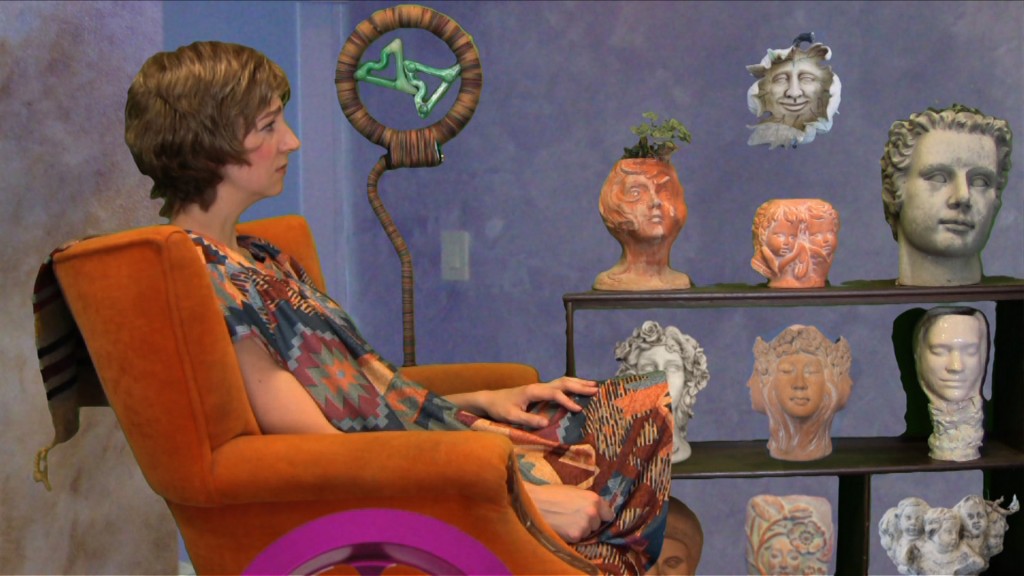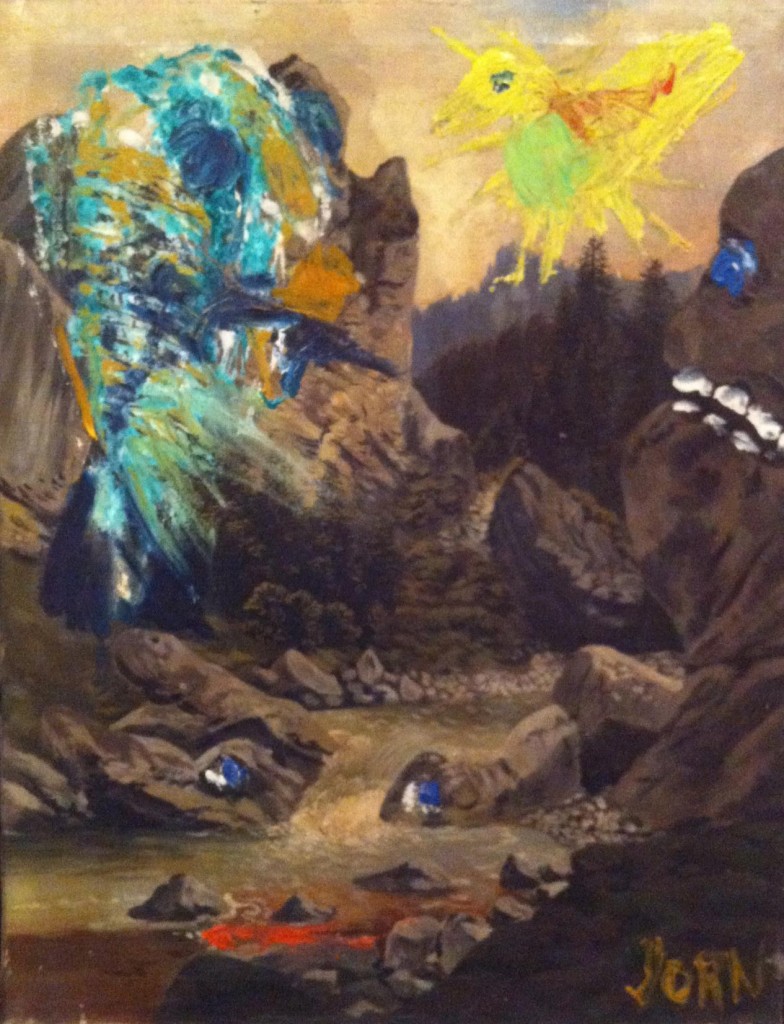PILLAR HUGGERS – A WORKSHOP AND EXHIBITION AT OR GALLERY, BERLIN
with Antonis Pittas, Johann Arens, Jay Tan, Klaus Weber, Christoph Keller, Hilde de Bruijn, Shannon Bool, Hadley+Maxwell
January 23 – April 18, 2015
Reception Friday, January 23, 7:30PM
Curated by Hilde de Bruijn, Shannon Bool and Hadley+Maxwell
The Danish experimental artist and thinker Asger Jorn (1914-1973), well-known as one of the driving forces of Cobra (1948-1951) and L’Internationale Situationniste (1957-1972) was a fierce collaborator, always looking for international exchange and discussions, facilitating collective work, magazines, and exhibitions. With great drive and ambition Jorn also wrote numerous books and articles envisioning, from an artistic point of view, ‘the first complete revision of the existing philosophical system’. Jorn believed that art is not derived from an ideology or worldview, but is the direct expression of an attitude towards life, belonging to the fundamental level of work and production. In line with this, Jorn combined in his writings ideas from a wide range of disciplines including politics, physics, economics, philosophy, anthropology, structuralism and art theory. He brought these various interests together via unconventional methods and in a vast variety of forms, in search of a comprehensive theory of art and life.
The architectural figure of the pillar-hugger as it appears in Jorn’s 12th Century Stone Sculptures of Scania1 represents a character whose body has become petrified while attempting to tear down a Cathedral by its vertical supports. A small group of artists have been invited to occupy the position of Pillar Huggers for a one-day visual symposium at Or Gallery Berlin where their work will form the material of their conversation. Transposing Jorn’s definition of a materialist attitude toward making art (as he articulates in the essay ‘What is Ornament’ (1948)) to exhibition-making, the artists are asked to animate the position of the body who, through its transformation into the inorganic, becomes the support for the very same edifice it attempts to destroy. How can we reconcile the compulsion to ornament with a resistance to the compulsion to make an exhibition? Can we avoid the exhibition as monumental decoration by approaching the encounter of and between artwork with the spirit of Jorn’s conception of vandalism and the spontaneous arabesque?
The remnants of the workshop opened to the public at 7:30 pm on January 23, 2015, and have also resulted in the visual essay What is Jornament? (published on this blog). The text is taken from the book Fraternité Avant Tout – Asger Jorn’s writings on art and architecture, 1938-1958. Editor: Ruth Baumeister. Translator: Paul Larkin.
Publisher: 010 Publishers.
—————
[1] The book traces the infiltration of a non-Christian iconography of pillar-huggers, beard-pullers, and double-heads in the decorative programs of churches built in the aftermath of pagan Scania by the recently converted kingdom of Denmark around the year 1000.
About the artists:
Klaus Weber is an artist, who lives and works in Berlin, he has shown extensively in both Europe and the United Sates. He conceives works across a variety of media and spatial units, which are often based on multifaceted technological interconnections and intricately organized production processes. Yet, by purposely manipulating everyday structures, the tracing of deviations and the exploration of the impossible, they undermine the metaphorical and actual power of a functionalist rationality. In doing this, Weber repetitively uses images of nature, and explores the sustainable potential of the untamable in a humorous and anarchic manner. Weber has had institutional solo shows at the Fondazione Morra Greco in Naples, the Nottingham Contemporary, the Secession in Vienna, the Hayward Gallery in London, as well as the Kunstverein in Hamburg. The artist has participated in group shows at the MOCA, Los Angeles, the Mori Museum in Tokyo and at the KW Institute for Contemporary Art, Berlin. Weber is represented by Andrew Kreps Gallery in NY and Herald St Gallery in London.
Shannon Bool (1972, Canada) originally from Vancouver Island, she attended Emily Carr University before studying in New York, Frankfurt and moving to Berlin were she lives and works. Solo exhibitions include: The Fourth Wall Through the Third Eye, Galerie Kadel Willborn, Düsseldorf; Walk Like an Etruscan, Daniel Faria Gallery, Toronto (2013); The Inverted Harem II, Bonner Kunstverein (2011); CRAC Alsace, Altkirch, France; The Inverted Harem, GAK-Gesellschaft für Aktuelle Kunst, Bremen (2010); RMIT Project Space, Melbourne, Australia (2008). Group exhibitions include MMK2 Boom She Boom, Works from the MMK Collection, Frankfurt; The Klöntal Triennale, Kunsthaus Glarus, Switzerland (2014); Soft Pictures, Fondazione Sandretto Re Rebaugengo, Turin; Painting Forever!, KW, Berlin; Justina M. Barnicke Gallery, Toronto (2013); the Sprengel Museum, Hannover (2012); 7×14, Kunsthalle Baden-Baden; Tactical Support, Gallery Tracy Williams, New York; Rock Opera, CACP Museum of Contemporary Art, Bordeaux (2009); Drawing on Sculpture: Graphic Interventions on the Photographic Surface, Henry Moore Institute, Leeds (2007); Make Your Move, Projects Arts Centre, Dublin; Spiralen der Erinnerung, Kunstverein in Hamburg; Carbonic Anhydride, Galerie Max Hetzler, Berlin (2006). Work is held in the collections of Berlinische Galerie Landesmuseum Fur Moderne Kunst, Fotografie und Architektur, Berlin; MMK Museum fur Modern Kunst, Frankfurt am Main; Lenbachhaus, Munich, and the Saatchi Collection, London. She is represented by Kadel Willborn Gallery in Düsseldorf and Daniel Faria Gallery, Toronto.
Johann Arens (born in Aachen, Germany 1981). He uses installation and video to survey the documentary properties of public interiors. By systematically re-editing the hardware of a location he draws up an abstract inventory of the social textures inherent in the site. His work is an enquiry into the role of human interfaces, the desire to touch artefacts and the mechanisms of user behaviour. After graduating from the Gerrit Rietveld Academy in Amsterdam, he received a stipend by the Netherlands Foundation of Visual Arts to complete his MFA in Fine Arts at Goldsmith, University of London. Since then he has worked on public commissions assigned by Arnolfini / Art and the Public Realm, Bristol, Letchworth Heritage Foundation and Jerwood Foundation London. In 2013 he has been awarded the Rome Fellowship in Contemporary Art by the British Academy and has recently started his residency at the Rijksakademie in Amsterdam.
Recent solo shows include ‘Internet Centre & Habesha Grocery’, Paradise Row, London; ‘Apple and Pear’, ASC Gallery, London; ‘Effect Rating’ De Service Garage, Amsterdam. Recent group shows include ‘New Contemporaries’, ICA London; ‘No Soul For Sale’ Festival, Tate Modern, London; ‘A useful-looking useless object’,Sierra Metro, Edinburgh; ‘I’ll explain you everythiinnngggg’, Chert, Berlin; ‘Hard Copy’, Pastificio Cerere, Rome, 2014 and ‘TTTT’, Jerwood Space, London.
Antonis Pittas (1973, Greece, lives and works in Amsterdam). As an artist, he mainly creates context-sensitive spatial installations, which are in formed by architecture, art-historical references, the performative aspects of installation art, and its social dynamics. Recent solo exhibitions, include: montage at Annet Gelink Gallery, Amsterdam, 2014, Performing Silence De Nederlandsche Bank (DNB), 2013, Amsterdam, Retroactive at the Hessel Museum of Art & CCS Galleries Bard College, NY, 2011/2012, Landart at the Benaki Museum, Athens, 2012, Untitled (this is a historic opportunity for us), at the Van Abbemuseum in Eindhoven, 2010, Next to his art practice, for the last seven years Pittas has been a teacher at the Rietveld Academie in Amsterdam, in 2014 semester professor in university of Hildesheim in Hildesheim as well as a guest teacher in many academy’s in Europe and U.S, Antonis Pittas is represented by Annet Gelink Gallery, Amsterdam
Jay Tan (1982, Croydon, UK, lives and works in Amsterdam) often uses hobbyist approaches and materials in her sculptures, installations and performances, to produce works in which tactility and basic mechanics perform key roles. We are participants in complex choreographies (histories, politics) where the most measurable properties and forces of the material world produce, fold into, collide with and emerge from our laws, languages and loves. Jay graduated from the Master of Fine Art Programme at the Piet Zwart Institute, Rotterdam in 2010. She has recently participated in group shows at Holly Bush Gardens, London, Karst Gallery, Plymouth, Camden Art Centre, London and PLAYTIME, the Rennes Biennale. Solo presentations include “The Work is Spun…”Rongwrong, Amsterdam, “The Retired Engineer” at the Witte de With Centre For Contemporary Art, Rotterdam and “You Can Stand and Watch Or Spar” Trapéz Gallery, Budapest. She is currently a resident at the Rijksakademie van Beelende Kunst, Amsterdam
Hilde de Bruijn (1971, NL, lives and works in Amsterdam) is a freelance curator and a curator at the Cobra Museum of Modern Art, Amstelveen. Her main freelance activity at the moment is a curatorial research into the writing and thinking of Asger Jorn (1914-1973) which builds a starting point to re-think issues in contemporary artistic and discursive practices – see also www.hildegoesasger.org. She is the co-editor of ‘ Archive Crisis’ , an artists´ book by Stefanos Tsivopoulos, designe Node and to be published by Japsam Books in Autumn 2015. Between 2007 and 2010 she was Head of Exhibitions at SMART Project Space, Amsterdam. She was an advisor for the NL Film Fund, the Mondriaan Foundation and City of Utrecht.
Hadley+Maxwell (artists duo since 1997, Canada, live and work in Berlin). Hadley+Maxwell’s installations, performances and writings, employ diverse media to rework iconic images and traditional forms as they are expressed in pop-cultural, artistic and political movements. They cut into reified narratives via direct touch, transposition and refiguration, putting into play the absences cast in relief.
Hadley+Maxwell have been collaborating since they met in Vancouver, Canada, in 1997. Public presentations of their work have included solo exhibitions at Artspeak (Vancouver), Contemporary Art Gallery (Vancouver), Künstlerhaus Bethanien (Berlin), Kunstverein Göttingen (Germany), Smart Project Space (Amsterdam), and Project Art Centre, Dublin, and group exhibitions at galleries and festivals including the Vancouver Art Gallery, Kunstraum München, the Power Plant (Toronto), the National Gallery of Canada, Taipei Fine Arts Museum, the Seattle Art Museum, La Kunsthalle Mulhouse (France), Witte de With (Rotterdam), the 4th Marrakech Biennale and the 19th Biennale of Sydney. They are represented by Jessica Bradley, Toronto, and live and work in Berlin, Germany.
Christoph Keller, born 1967 in Freiburg/Breisgau, studied Mathematics, Physics and Hydrology in Freiburg, Berlin and Santiago de Chile, at the University of Arts, Berlin and at the Academy of Media Arts, Cologne. Selected solo exhibitions and projects include: Small Survey on Nothingness, Schering Stiftung, Berlin (July 5 – October 4, 2014);Expedition Bus – Shaman Travel, Presentation at abc Berlin (2012); Aether between cosmology and consciousness, Nouveau Festival Du Centre Pompidou, Paris (2011); Voyages Extraordinaires, CRAC Alsace Lorraine, Altkirch (2010), Observatorium, Kunstverein Braunschweig (2008).Recent group exhibitions include: Realität und Fiktion, Villa Schöningen, Potsdam (2013); Ghostbusters – or how to stress photography, Kunsthal Charlottenborg, Copenhagen (2013); Virtuosity – A concert on skill and disruption, strength and nonchalance, morale and cheating, Berliner Philharmonie, Berlin (2013); L’Institut des archives sauvages, Villa Arson, Nice (2012) and The Worldly House, Archive for dOCUMENTA (13) (2012).
The exhibition at Or Gallery took place in collaboration with the Embassy of Canada.
WHAT IS JORNAMENT?
What is Jornament? is a visual essay created by artists Shannon Bool, Hadley+Maxwell and Jay Tan making use of enlarged copies of the English translation of Asger Jorn’s text ‘What is an Ornament?’ from 1948. The text is taken from the book “Fraternité Avant Tout – Asger Jorn’s writings on art and architecture, 1938-1958.” Editor: Ruth Baumeister. Translator: Paul Larkin. Publisher:010 Publishers.
ALFRED JARRY AND ASGER JORN: THE EPICUREAN INFLUENCE AS SOCIAL ‘SWERVE’, BY KOSTIS VELONIS
Within the framework of my research into Asger Jorn´s writing and thinking I organize public and semi-public sessions with special guests at a variety of venues. The guest´s practice, knowledge, insights, or responses are informative to my research, or steer the direction I take on a particular topic. The sessions also often respond to the context of the hosting institution, or to a specific request. Making the sessions public is a way to share and enter into a dialogue with the audiences.
On January 8, 2016 the session ‘Asger Jorn: Thinking in Threes’ was hosted by Circuits and Currents, the Project Space of the Athens School of Fine Art. Two Athens-based artists contributed to this session. Yiannis Isidorou with a performance-text which can be found in the Public Sessions section of this blog, and Kostis Velonis with the text below.
Kostis Velonis received his Doctorate in architecture from the N.T.U.A University of Athens (2009). He studied Cultural Studies (MRes) at the London Consortium and Visual Arts at the Paris VIII University, (Maitrise, D.E.A). Recent shows (selections 2014-15): This probably will not work, Lothringer13 – Städtische Kunsthalle München, Munich 2015; Adventures of the Black Square: Abstract Art and Society 1915 – 2015, Whitechapel Gallery, London 2014; The Theater of the World, Museo Tamayo, Mexico City; This is not my Beautiful House, Kunsthalle Athena, Athens; No Country for Young Men, BOZAR, Brussels.
As the current conditions in global markets are in a potentially unstable situation the activation of Epicurus’ (341-270 BC) swerve (“Clinamen”) proves to be of some interest, since it introduces us into a mobile and liberating perception of things that corresponds to the risks of the financial hyper-capitalist structure. Epicurus’ positions are firmly opposed to Platonic cosmogony, given that in Plato’s only text on nature, Timaeus, real nature is a perfectly organized structure consisting of geometrical elements, such as spheres, pyramids, cubes, etc. In many ways, quantum mechanics, which describes the behavior of matter on molecular and atomic level, can be interpreted as a continuation of the atomic theory expounded by the philosophers of Atomism (Democritus, Leucippus), of which a late proponent, during the Hellenistic period, was Epicurus himself. The philosopher from Samos tried to relate physics and cosmogony with human nature. We would have to wait many centuries until modern physics confirmed the ancient materialists’ speculation on the atomic composition of matter.
Modern physics explains matter recognizing that atoms move in unpredictable directions. Epicurus idea of continually moving atoms that swerve (clinamen), following the inclination of a fundamental randomness, is already confirmed by the history of the discipline of quantum physics.
Lucretian deviation
In short, according to Epicurus, there are only two fundamental elements in the universe: atoms and void. The latter considered by Epicurus as necessary for the movement of bodies. His Roman descendant, Lucretius (99 BC-55 BC), in his philosophical poem – a treatise of physics, actually – under the general title On the Nature of Things (De Rerum Natura), specifies that “…when the atoms are being drawn downward through the void by their property of weight, at absolutely unpredictable times and places, they deflect slightly from their straight course, to a degree that could be described as no more than a shift of movement“.[i]
Lucretius also examines the issue of the swerve of atoms. He thinks that without this slight deviation of atoms from their usual movement, “all would fall downward through the unfathomable void like drops of rain”, and no contact would be possible, no collision among the original elements, and thus nature would never create anything at all. Lucretius wonders: “…if new movements arise from the old in unalterable succession, if there is no atomic swerve to initiate movement that can annul the decrees of destiny and prevent the existence of an endless chain of causation, what is the source of this free will possessed by living creatures all over the earth?”[ii] It is this “natural” deviation that allows a degree of arbitrariness to the universe and thus introduces the idea of contingency.
The principle of indeterminacy appears to be important for the practice of creative expression, as it constitutes a field where human freedom can be exercised. This liberating indeterminacy subverts deterministic conceptions, the causal perception of the world through the tyrannical chain of causes and effects, and, finally, the Stoic idea of an unavoidable – according to a common belief – fate. All Epicurean thinkers agree on the idea of a free will that does not obey to fate; that is, a will that determines our actions, beyond any kind of predetermination.
Modern deviation: Ubu Roi
The Greek origin of deviation could not have been restricted to antiquity, since it touches upon modern scientific assumptions of physics, and all the more so when one attempts at integrating it with the multifarious logic of modernity. Can this volatile condition of matter, and more specifically of atomic deviation, function as a synecdoche in terms of a theatrical and visual avant garde, through formalist formulations no less?
An “oblique” Epicurean “deviation” can be attested in a Promethean personage of modernity, the Symbolist writer Alfred Jarry (1873-1907), as well as in the writings and the visual work of the Situationist Asger Jorn (1914-1973).
In Jarry’s play Ubu Roi (King Ubu, 1896), an inhuman, brutal and overgrown major usurps the throne of the king of Poland. During the whole play, Jarry’s antihero covers his head and body with a large robe, on which there is the design of a lengthy spiral that winds up on his belly. The term invented by the French writer for this spiral is la gidouille, which indeed denotes a spiral, though not in the sense of a strict, linear geometrical construction, but in a more relaxed sense, as if it was, materially speaking, a formerly taut and now dilapidated hose. This figure is identified with Ubu’s protruding stomach.
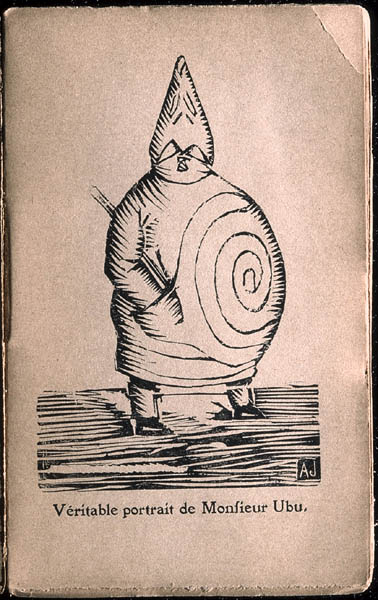
Alfred Jarry, “Véritable portrait de Monsieur Ubu”, woodcut for Ubu Roi, Paris, Éditions du Mercure de France, 1896
It is interesting to note the relation between Ubu’s body architecture, his gestures and the spiral on his robe. The spiral on Ubu’s belly alludes to the qualities of Clinamen – that is, to deviation from a straight line, to deviant movement. It could be the graphic illustration of an atom’s course in the void, an atom that has completed an elliptical orbit and now springs to infinity, deviating from any calculation imaginable.
Ubu, the ambitious major, does not content himself with fate; on the contrary, he follows and asserts his becoming, shaping it in his own way. What matters is how he accomplishes his goals, using base instincts such as passion for crime, an inclination to constant intrigues and all kinds of vices. Can the overgrown Ubu, with his ever-expanding belly highlighted by the spiral design, be a model for nihilist thinkers? Since pleasure is so intrinsically ephemeral, we ‘d better not go without it at all: this could be what Père Ubu has constantly in mind before going on with his next brutal act.
Yet from the point of view of Epicureanism, this is very far from a model of pleasure accompanied by a constant disposition of tranquility, in the sense of the absence of bodily pain and mental anxiety. Thus, one should not confuse real pleasure, as theorized by Epicurus, with the pleasures of the depraved. Within the context of Ancient Greek philosophical schools, Ubu is a Cyrenaic. He is a modern caricature of Aristippus of Cyrene, who taught that the future seems so uncertain that it makes no sense to postpone the moment of a fleeting pleasure. Aristippus reminds us indirectly the logic of Jarry’s hero, through his views that the object of desire and pleasure is irrelevant, and that what matters is just the degree of pleasure and the intensity of the feeling of satisfaction.[iii]
Not only does not Major Ubu, who usurps the throne of the king of Poland, wish tranquility, but he consciously pursues this fleeting pleasure that, for the anti-conformist Jarry, is an ambiguous model / anti-model of himself. In reality, Ubu is the Physics teacher Félix-Frédéric Hébert, in Jarry’s high school in Rennes, whom Jarry used to make fun of, along with his fellow students, in an impromptu marionette theater. The full-bodied professor Hébert incarnates all the negative qualities that young Jarry wanted to criticize, and in the stories of these French teenagers he becomes King Ubu.
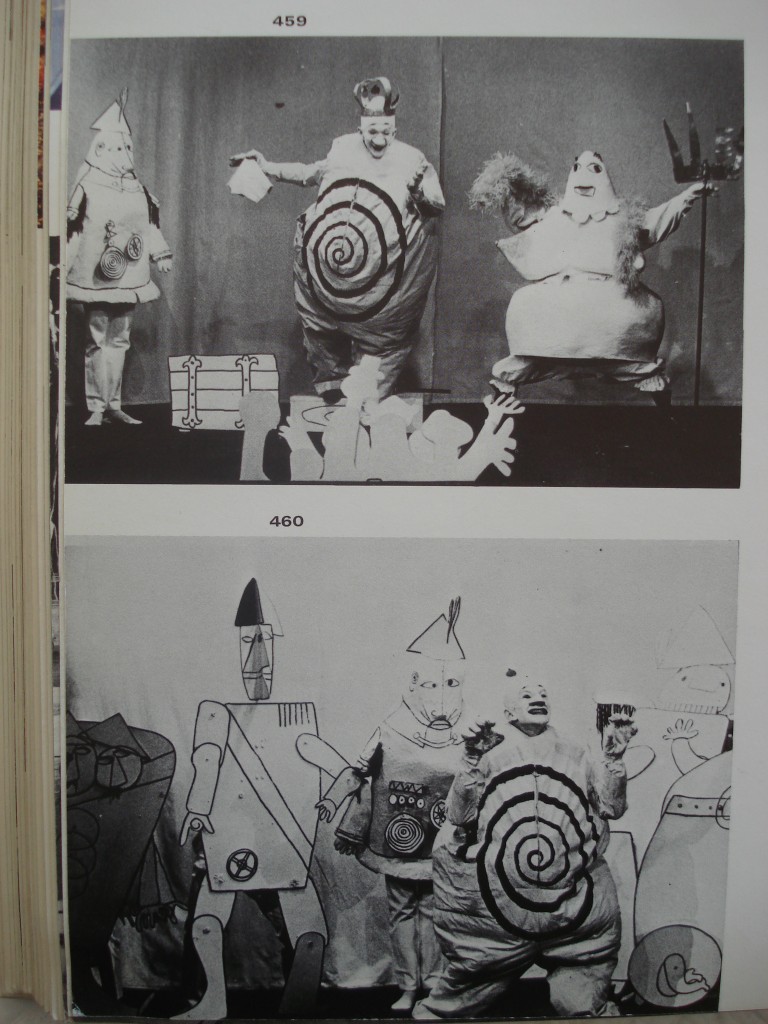
Alfred Jarry’s “Ubu Roi”, stage design by Franciszka Themerson, Dir. by Michael Meschke, Stockholm, Marionetteatern, 1964
Jarry himself refers to the word clinamen, which is the Latin version of Epicurean deviation, in his pataphysical calendar, where it coincides with the month of August. In a less cryptic fashion, the Latin clinamen-deviation is used in Jarry’s 1898 novella Gestes et opinions du docteur Faustroll pataphysicien: Roman néo-scientifique suivi de Spéculations, as a subchapter to describe a painting machine (“Machine à peindre”).
The painting machine is a metaphor of a conscious spatial deviation from a straight line, which “…like a spinning top, it dashed itself against the pillars, swayed and veered in infinitely varied directions, and followed its own whim in blowing onto the walls’ canvas the succession of primary colours…”.[iv] The painting machine, like a “modern deluge of the Universal Seine” is “the unforeseen beast Clinamen ejaculated onto the walls of its universe”.[v] Clinamen, spreading its colors everywhere, could be a metonymic portrait of Jarry, as well as an illustration, in terms of mechanics, of the conditions of the Universe, where atoms are dispersed from a point of departure towards an uncompromised deviation. In Docteur Faustroll, Jarry finds his real model as the inventor of the science of pataphysics, the “science of imaginary solutions”.[vi]
The ornament and the arabesque of Asger Jorn
Although familiar with the literature and the philosophy of Jarry’s discourse, Asger Jorn, who wasn’t a memer of the College but was who was declared ‘Commandeur Exquis of the Ordre de la Grande Gidouille’ wrote in 1961 an article for the Intellectual political movement L’Internationale Situationniste (IS) where he criticized pataphysics for having the qualities of a religion. But his isolated criticism of Jarry’s pataphysics, which was followed by a commendatory note on the part of the publisher, Mr. Guy Debord, cannot possibly annul the influences that nurtured the generation of COBRA (International group of artists and poets, 1948-1951) and the IS.[vii]
An indication of this influence that shows an Epicurean vein in Jorn’s worldview is found in a text entitled “What is an ornament?”(1948), which reveals how close Jorn is to Jarry’s ideas, yet at the same time how much he differentiates himself from them. In this article, he describes “the wave formation matter”, which is the result of the interconnection between the two substances that are active in mutual movement.[viii] The interaction of the different waves through the formalist interpretation can be attributed to the qualities of the arabesque.
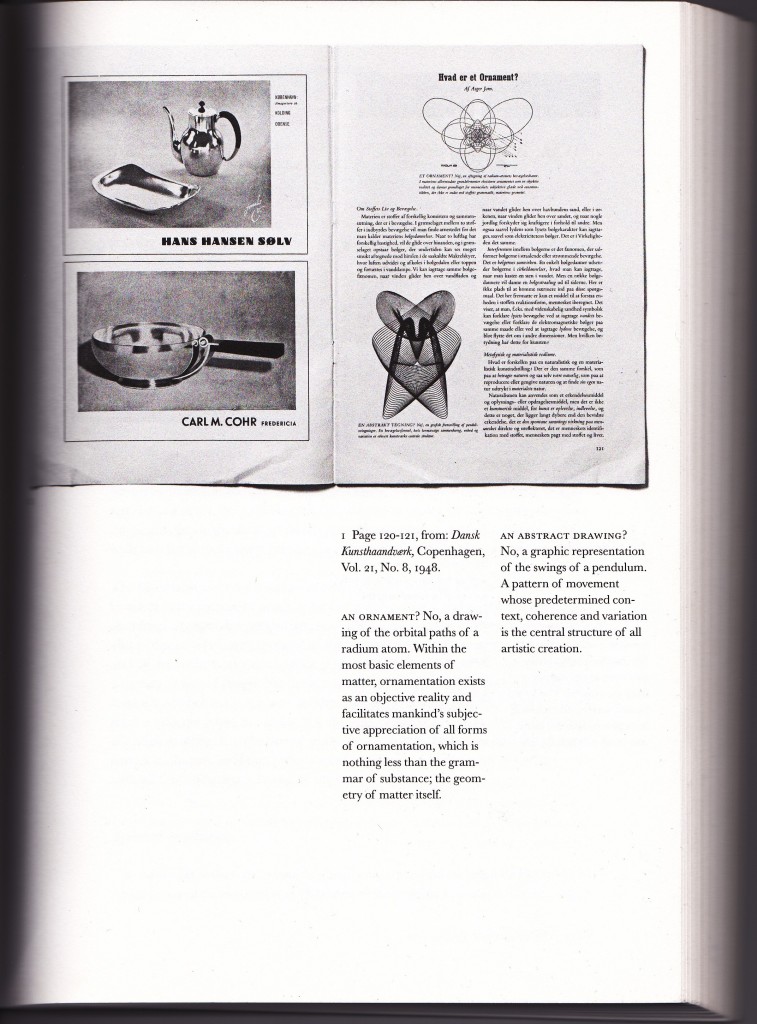
Asger Jorn, page from the essay of Asger Jorn’ ‘What is an Ornament?’ (1948), in Fraternité Avant Tout: Asger Jorn’s Writings on Art and Architecture, 1938-1958, edited by Ruth Baumeister, translated by Paul Larkin (Rotterdam: 010 Publishers, 2011), p.197
From the outset, Jorn gives a summary view of his positions for a “grammar of substance” offered by the philosophy of decoration. More specifically, underneath a picture included in his article, he writes: “An ornament? No, a drawing of the orbital paths of a radium atom”.The physical atom as an ornament and the ornament as a construction that obeys to the laws of physics is an opening to a causality of the deviation of atoms and their reflections towards larger forms, which are destined by nature to move dynamically. The ornament is not programmed to repeat itself unchanged; it changes shape according to the circumstances.
The ingenious Jorn explains colorfully the tendency of matter to result in the organic form of arabesque – similar in this with Lucretius’ clinamen. The shape of the arabesque also comprises Jarry’s gidouille, thus showing immediately an affinity in the treatment of form. Jorn’s descriptions attribute to the arabesques qualities that Epicurus would seek for atoms in the void, spreading everywhere, since anything that moves is destined to take shape, or else to extend linearly as an arabesque in the time-space continuum. At the same time, each arabesque, reacts with other arabesques which have described longer trajectories and “which in turn engage with all that we describe as substances or matter, and of which we only know that there are a myriad arabesque movements – right from the ingenious systems holding atoms and molecules together up to the movement of the planets in space – all circling the solar system’s invisible core”.[ix]
Arabesques can be perceived as the intelligent system of atoms and molecules, and they even explain the movement of plants in space. Accordingly, “we can observe the flowing seas, the evaporation taking place across both land and water, after which it rises to the heavens only to cool once again and condense to rainwater, falling back to the ground so as to join with streams and rivers where the cycle from sea to clouds will start again”.[x] Jorn offers with explicative lyricism the fundamental values of decoration as a life motif. But do arabesques, the quality of movement aside, also have the logic of deviation, as described by Lucretius with regard to the movements of atoms?
Jorn writes: “People rise from their beds in the morning and their pattern of wandering throughout the day describes their own arabesque of footsteps across the earth. They follow the same routes day after day”. And further on: “their footsteps become pathways, which branch out across the terrain and which show where man has left his tracks, and then others go along the same tracks and these become roadways, reflecting the abundance of life – arabesques in man”.[xi] While this description could be attributed to a thinker that sees behind the phenomena visions that repeat themselves identically in time, following a stringent Platonic logic, the answer is finally given by Jorn himself, when he argues that “static forms … have a tendency to become dynamic, because the presentation of dynamic art is the natural way of things”.[xii]
Jorn’s difference compared with Jarry is that the former tries to find a Cartesian acceptance in the dynamic composition of matter, to formalize the Epicurean deviation with the motif of arabesque, although he is no more able to define the limits of this extension. Lucretius expands generously Epicurus’ wisdom, bringing to mind Jorn’s methodology, regarding the traces of arabesques from the small to the grand scale: “Certainly the primary elements did not intentionally and with acute intelligence dispose themselves in their respective positions, nor did they covenant to produce their respective motions; but because through the universe from time everlasting countless numbers of them, buffeted and impelled by blows, have shifted in countless ways, experimentation with every kind of movement and combination has at last resulted in arrangements such as those that created and compose our world…”.[xiii]
Both Jarry and Jorn try to speak, each one in his own terms, about deviation as a fundamental element of free will, which cannot but reflect the Epicurean view of the formation of the Universe. Movements with no connection or movements that deviate from their expected precise recurrence, thus defining what we call contingency, constitute Jarry’s way of philosophizing, through Dr. Faustroll, as well as his nihilistic caricaturizing, through the lame materialist major Ubu.
In the end, if deviation in the sense of declinatio or clinamen corresponds, in terms of social history, to a deviant course, the inclination of which is translated into the subject’s free will, both Jarry, with the blatant destructivity that runs through his writings, and Jorn, with his insistence on an experimental and anarchic creativity, seem to substitute for the claim of an “intelligent design” or the traditional view of God’s omnipotence the subversive qualities of matter. Both expound, though in different ways, a modern-day paganism, compelled by “the presence of a distinct boredom”, going against the supreme will of a god, a doctrine, a predictable existence. Jorn, in particular, advocates“the pure desire for the unexpected, the thirst for surprise… the inclination to difference… the flânerie”.[xiv]
Epicurus’ wisdom is of vital importance for a “deviant” freedom in existential terms. Since all cosmic order springs from this deviation, even the concepts used by the pataphysicians can be moved away from the pragmatist restraint of language, especially if one thinks of Jarry’s exuberant neologisms.[xv] Empirical functions such as a sudden collapse, a violent breakup, a change of course-dislocation, reconstruction or the paradox of love help us, among many others, understand how the Epicurean swerve in physics and philosophy can have an immediate impact on the world of human relations.
[i] Lucretius, On the Nature of Things (De Rerum Natura), translated, with an introduction and notes by Martin Ferguson Smith (Indianapolis & Cambridge: Hackett, 1969), Book II, 216.
[ii] Idid., Book II, 254.
[iii] Despite the similarities between Epicureanism and Cyrenaicism, these two schools constructed very different systems of thought. See Jean Paul Dumont, La philosophie antique (Paris: Presses Universitaires de France, 2003), and W. Windelband-H.Heimsoeth, Handbook of History of Philosophy [Enchiridio Istorias tis Filosofias], Greek translation by Ν. Μ. Skouteropoulos (Athens: ΜΙΕΤ, 1991).
[iv] Gestes et opinions du docteur Faustroll pataphysicien: Roman néo-scientifique suivi de Spéculations (Paris: Charpentier, 1911). I quote here the English edition: Alfred Jarry, Exploits & Opinions of Dr. Faustroll, Pataphysician, trans. by Simon Watson Taylor, Introduction by Roger Shattuck (Boston: Exact Change, 1996), p. 88.
[v] Jarry, Exploits & Opinions of Dr. Faustroll, Pataphysician, op. cit., p. 88-89.
[vi] “Pataphysics … is the science of imaginary solutions, which symbolically attributes the properties of objects, described by their virtuality, to their lineaments”. Ibid., p. 22.
[vii] Asger Jorn, “La pataphysique: Une religion en formation”, Internationale Situationiste 6 (August) 1961, p. 29-32; included in Pataphysics: A Useless Guide, by Andrew Hugill (Cambridge, Mass. & London: The MIT Press, 2012).
[viii] Asger Jorn, “What is an Ornament?” (1948), in Fraternité Avant Tout: Asger Jorn’s Writings on Art and Architecture, 1938-1958, edited by Ruth Baumeister, translated by Paul Larkin (Rotterdam: 010 Publishers, 2011).
[ix] Jorn, “What is an Ornament?”, op. cit., p. 207
[x] Ibid., p. 207.
[xi] Ibid., p. 207.
[xii] Ibid., p. 203.
[xiii] Lucretius, On the Nature of Things, op. cit., Book I, 1008.
[xiv] Asger Jorn, ‘Charme et mécanique, sur le rôle du vandalisme dans l’histoire des arts’, in Asger Jorn “Pour la Forme. Ebauche d’une méthogologie des arts”, Paris, Internatioanle situationniste, 1958. English translation ‘Charms and Mechanisms’, in “Concerning Form”. An outline for a methodology of the arts”, Museum Jorn, Silkeborg, 2012.
[xv] It is interesting to note the deviation searched by Michel Serres in the field of language, when he argues that every language is a unique seed, an original distribution of parasites. He even dares to oppose consonants and vowels in order to convey the necessity of deviation. The ideal example is Ubu’s famous “Merdre” instead of “Merde” at the beginning of the First Act of Jarry’s play. Here is Serres’ argument: “Sometimes winds, breaths, composed together incline toward each other without the intervention of valves or consonants. Oui is a coil, a tress of voice. A bit free, a bit loose, undone, without the anguish of strangulation. Oui without the swarming parasites. Oui in the wind of the Paraclete. Oui in the turbulent tresses of the river. Oui finally works itself loose [se desserre]”. Michel Serres, The Parasite [Le Parasite (Paris: Grasset & Fasquelle, 1980)], trans. by Lawrence R. Schehr (Baltimore, Maryland: The Johns Hopkins University Press, 1982).
THINKING THROUGH MATTER II
Within the framework of my research into Asger Jorn´s writing and thinking I organize public sessions with special guests at a variety of venues. The guest´s practice, knowledge, insights, or responses are informative to my research, or steer the direction I take on a particular topic. The sessions also often respond to the context of the hosting institution, or to a specific request. Making the sessions public is a way to share and enter into a dialogue with the audiences.
‘Thinking Through Matter’ was a talk by myself and Copenhagen-based artist Ferdinand Ahm Krag in the framework of the exhibition ’Asger Jorn – Restless Rebel’ at the Statens Museum for Kunst, Copenhagen. The talk took place Saturday 22 March 2014.
Both my introduction and Ferdinand Ahm Krag’s contribution find their starting point in Asger Jorn´s text ´What is an Ornament?’ from 1948. In this text Jorn states that ornamentation is to be found in all matter, that ornamentation is “the grammar of substance”, “the geometry of life” itself. Illustrations in Jorn’s text include a representation of the orbital paths of a radium atom, and a representation of the earth’s rotational curves within its phases of movement. They serve to stress his idea of the ornament as “spontaneous arabesque”, a type of ‘moving’ and hence dynamic ornamentation that is natural and about organic cohesion.
My text introduces these ideas (a different version though from the session ‘The Grammar of Substance’), and serves as a support to join in Ahm Krag’s thinking about what it means to be ‘natural’ and have a ‘natural’ relationship with materiality in our current times, the age of the anthropocene – the human-made geological epoch. You can find my introduction in the blog entry ‘Thinking Through Matter I’.
In his text ‘What is an ornament’ Asger Jorn describes the ornament as the formal language of nature. Different elements interact in such a way that it becomes ‘ornamental’: think of the patterns the wind and the clouds create. On a micro scale Jorn finds the principle of ornamentation inside the atom. But how far does the principle of ornamentation reach? When does it stop to relate to the human world? In relation to Jorn’s text I am particularly interested to try and locate the outer boundary of the ornament. How far does it stretch? So let us look at the figure of the ornament as a way of assembling a cosmology.
In his ambitious trilogy ‘Spheres’ the philosopher Peter Sloterdijk tries to describe a metaphysical history of “enclosed spaces, utopian or practical pods and domes, real and fantastical atmospheres of ecosystems”. In the first volume he writes: “since the start of the Modern Age, the human world has constantly – every century, every decade, every year and every day – had to learn to accept and integrate new truths about an outside not related to humans.” And he continues: “Every view into the extra-terrestrial spaces provided increasing evidence that mankind is towered above on all sides by monstrous externalities that breathe on it with stellar coldness and extra-human complexity. The old nature of homo sapiens is not up to these provocations by the outside.”
Matter builds up into solar systems that build up into galaxies that build up into clusters and superclusters, and at the very largest scale we find the filament-structures of visible and dark matter – the overall superstructure of the known cosmos. The ornament of matter at the largest scale. Does the natural ornament of matter at a certain point leave the human being behind – and where exactly is this point? And where should we position Asger Jorn in all this? Does he stay within a human centered world?
One could wonder why there are no images of spiral galaxies in Asger Jorn’s text ‘What is an ornament?’ Asger Jorn never leaves planet Earth. It’s from the ground that he looks up and observes the patterns of the clouds and the weather. Today the weather has become climate and the topic of climate change. Climate models always envision the globe seen from outer space. From some thousand kilometers above ground, where there is no gravity. Climate models place us in an imaginary space outside earth and this positioning of ourselves outside earth trying to monitor the climate is made possible by the interior workings of computers. Asger Jorn stays on ground – he stays grounded. But he inhabits the ground in such a way that it seems to be infinite in all directions.
For those of you who have seen the movie ‘Gravity’ – that just won seven Oscars – you will know that the film starts with the following statement: LIFE IN SPACE IS IMPOSSIBLE. ‘Gravity’ is about an astronaut – Dr. Ryan Stone – trying to fight her way out of space and back down to earth. It’s a sort of reversed science-fiction: It’s not about expansion out into Space. It’s about getting back down to earth. Getting grounded and gaining gravity.
It is called ‘re-entry’ when a space-shuttle comes down the atmosphere from outer space. If the film ‘Gravity’ reflects the changing mental state of a culture that now is in the process of a re-entry – a re-entry to the planet and the materiality that makes up the planet, then the question is: what ground are we re-entering? Is it the same ground consisting of the same materiality as when we – metaphorically speaking – took off from the ground in the beginning of modernity ?
If we follow the logic of the film ‘Gravity’ the odd thing is, that it is Earth itself that has become utopia. Not Space. But if it is Earth itself that is the new ´space´ to project our ideals onto, then one might ask: if we are not on earth, then where are we? Apparently we are dealing with this problem of locating where we are?
Marx wrote the following famous words in the communist manifesto: “All fixed, fast-frozen relations, with their train of ancient and venerable prejudices and opinions, are swept away, all new-formed ones become antiquated before they can ossify. All that is solid melts into air.” We are now learning that the ‘air’ Marx mentions is not at all a metaphor. This ‘melting process’ of industrialization and of capitalism has been so profound that it has within the last century led to an epoch-scale crossing of a geological boundary.
If we took off from the planet in the beginning of Modernity we are now in the process of a very troubling and difficult re-entry that brings us beyond modernization. We took off in the geological period called the Holocene – the geological period of time that for 10.000 years provided a safe environmental envelope within which contemporary civilization has developed. Our re-entry to the planet – this re-orientation towards matter, this re-materialization of human thought – is not a re-entry to earth and matter as we know it. It’s an entry to a radically new world. Some geologists have now come up with the term the Anthropocene’. The thesis of ‘the Anthropocene’ suggest that:
“The earth is now moving out of its current geological epoch, called the Holocene and (ii) that human activity is largely responsible for this exit from the Holocene, that is, that humankind has become a global geological force in its own right” – (The anthropocene: conceptual and historical perspectives – Will Steffen, Jacques Grinevald, Paul Crutzen and John McNeill, The Royal Society, 2011)
The starting point of the Anthropocene is set in 1950 by geologists. Jorns text ‘What is an Ornament’ is from 1948 – an interesting coincidence. I would like to bring up one of his interpretations of the ornament again: “The ornament as spontaneous arabesque, which manifests itself as a set of elements within a greater whole. This is ‘moving’ and hence dynamic ornamentation. It is about organic cohesion”.It is my strong feeling that Asger Jorn´s thoughts on the ornament and ornamentation – in some updated version – could be a powerful and necessary contribution to the urgent task of assembling an ecological thought that is not grounded in the Holocene, but instead in the strangely disrupted world of the Anthropocene that goes beyond all former notions of the natural world.
I will now show a video that I recently made and which is partly inspired by Jorns thinking about the ornament. But it also differs a lot from his thinking. My work does not really deal with `organic cohesion`. Instead it is about “digital cohesion”. It is a kind of spontaneous digital primitivism. And the question is – for later discussion – if there still is such a thing as “organic cohesion” that can be used as a model for a materialistic cosmology? How do “organic cohesion” and “digital cohesion” relate to one another?
Ferdinand Ahm Krag, 2014
THINKING THROUGH MATTER (I)
Within the framework of my research into Asger Jorn´s writing and thinking I organize public sessions with special guests at a variety of venues. The guest´s practice, knowledge, insights, or responses are informative to my research, or steer the direction I take on a particular topic. The sessions also often respond to the context of the hosting institution, or to a specific request. Making the sessions public is a way to share and enter into a dialogue with the audiences.
‘Thinking Through Matter’ was a talk by myself and Copenhagen-based artist Ferdinand Ahm Krag in the framework of the exhibition ‘Asger Jorn – Restless Rebel’ at the Statens Museum for Kunst, Copenhagen. The talk took place Saturday 22 March 2014.
Both my introduction and Ferdinand Ahm Krag’s contribution find their starting point in Asger Jorn´s text ´What is an Ornament?’ from 1948. In this text Jorn states that ornamentation is to be found in all matter, that ornamentation is “the grammar of substance”, “the geometry of life” itself. Illustrations in Jorn’s text include a representation of the orbital paths of a radium atom, and a representation of the earth’s rotational curves within its phases of movement. They serve to stress his idea of the ornament as “spontaneous arabesque”, a type of ‘moving’ and hence dynamic ornamentation that is natural and about organic cohesion.
My text introduces these ideas (a different version though from the session ‘The Grammar of Substance’), and serves as a support to join in Ahm Krag’s thinking about what it means to be ‘natural’ and have a ‘natural’ relationship with materiality in our current times, the age of the anthropocene – the human-made geological epoch. You can find Ahm Krag’s talk in the blog entry ‘Thinking Through Matter II’.
What is an Ornament?
Jorn wrote the article ‘What is an ornament?’ in 1948. The text was up to a large extend stemming from Jorn’s critique on the predominant functionalist architecture of the time. Functionalist architecture, roughly said, means that the design of a building should clearly reflect its purpose. In the area of ornamentation this also generally implied that features which are not necessary for convenience, construction, or propriety, were not desirable.
The famous article ‘Ornament and Crime’ by architect Austrian Adolf Loos from around 1910 has been highly influential in the thinking about ornamentation and functionality. Loos regarded ornamentation as the expression of repressed human drives from the subconscious, and believed that we have to transcend these, in order to culturally progress. Asger Jorn, on the contrary, claimed that ornamentation is a fundamental need of human beings, and that a truly functionalist architecture would acknowledge and address this need. As early as 1943 he wrote: “Must it be left to the reactionary forces in our midst to seek to satisfy our irrational need for (and response to) architecture – to our surroundings?” From: ‘On the artistic potential inherent within architecture’ (By the painter Asger Jørgensen)
One of the aspects that Jorn discusses in ‘What is an ornament?’ is what he calls “the tragic history of the ornament in art” – the fact that in the western world, art itself became split into two categories: high art (also classical art) and low art, which Jorn refers to as “folk/banal or spontaneous art”. In relation to this, he states that there are two different interpretations of the ornament:
- The ornament as monumental decoration which seeks to form a finite whole, and becomes static ornamentation.
- The ornament as spontaneous arabesque, which manifests itself as a set of elements within a greater whole. This is ‘moving’ and hence dynamic ornamentation. It is about organic cohesion.
Examples of static ornamentation are: classicist Renaissance art, and various forms of neo classicism.

Book cover, 'Bauerliche Barock Prediger', from Jorn's personal library, now at Museum Jorn, Silkeborg
Dynamic ornamentation is to be found in the art forms of all primitive people, art of the Orient, and prehistoric art – until Romanesque monumentalism set in. From that moment on says Jorn, there has been a constant reappearance and disappearance of dynamic ornamentation: Baroque, Rococo, Empire Style, Art Nouveau.
Jorn connects the appearance and re-appearance of both static and dynamic ornamentation to economic and political changes – static ornamentation belonging to classical art, the language of the ruling class, and dynamic ornamentation belonging to spontaneous art, belonging to the people. He also notes that static forms have a tendency to become dynamic because dynamic art “is the natural way of things”.
Ornamentation as the formal language of nature itself
There is however much more to be discovered about Jorn’s text than categorization of ornamentation, or the defence of ornamentation in a critique of functionalism. In fact, the very first point that Jorn makes in ‘What is an ornament?’, is that “Matter consists of substances in motion that have different composition values and consistencies. At the interface between two substances engaged in mutual motion, we find the catalyst for that which we describe as the wave formation of matter.” Think of wind-clouds, wind-sand, sound-light etc. He importantly adds that “this cohesion that exists within the reaction forms inherent in different substances, includes that of mankind.” Jorn illustrates the idea with several images.
The first one he provides with a long caption saying: “An ornament? No, a drawing of the orbital paths of a radium atom. Within the most basic elements of matter, ornamentation exists as an objective reality and facilitates mankind’s subjective appreciation of all forms of ornamentation, which is nothing less than the grammar of substance; the geometry of life itself.”
Jorn’s caption with the first image is: “A Flower? No, a representation of the earth’s rotational curves within its phases of movement. In every aspect of matter from the smallest atom to the whole universe, we find the same pattern of movements as those created, not just flowers but mankind itself. Everything is reflected within everything else.
The second image shows a cross section of the human muscle with right next to it, a map of a town in the Middle Ages. The third images says ‘Australian sand decoration’.
Another article (‘Levende Cultuur’ / ‘Living Culture’) by Jorn, which art historian Graham Birtwistle brings up in his publication ‘Living Art’, starts out in a similar way. Just like in ‘What is an Ornament?’ which was written only a year before, Jorn discusses the arabesque, defining the arabesque as “the expression of movement on all levels”. To Jorn, the arabesque (ornamentation) is the formal language of matter itself. This notion of the arabesque is part of Jorn’s argument for the unity of all life. He says: “All that we know of life is that it is organized movement. All that exists and lives is in movement and forms arabesques in time and space. These arabesques are completely in themselves and yet at the same time they become involved with other arabesques and thereby form organisms; these, in turn, are part of still larger movements which are taken up in that universal movement which we call matter.”
Jorn’s theory of materiality
The fact that Jorn in both ‘What is an Ornament’ and in ‘Living Culture’ starts out defining the ornament as “the grammar of substance, the geometry of life itself”, is indicative for how much the examination and negotiation of the relation between the materiality of the art work and its discursive meanings, between matter and mind in general, meant to him. These issues were of crucial importance in Jorn’s practice. I will discuss his materialist(ic) attitude to life, and would first like to mention art historians Helle Brons and Graham Birtwistle, as their writings which have been very informative to this.
Jorn’s theory of materiality is inspired by thinkers such as Karl Marx, Susanne Langer, Gaston Bachelard, and Niels Bohr – all of whom emphasized – in different ways – the role of physical matter in human thinking. Despite the fact that Jorn was also very critical of some of their ideas, they built an important basis for his own thinking, or re-thinking of matter. This includes thinking about art not as something derived from an ideology or world-view (as Marxist art theory and aesthetics often suppose) but thinking of art as the direct expression of an attitude to life, and as belonging to the fundamental level of work and production. At the basis of his thinking is also the relationship between the visual, the material and the semantic (On an artistic level this means that Jorn’s aim was not a purely visual or material art, but “a recognition of these aspects as meaningful in itself before the discursive level”, as Helle Brons puts it in her paper ‘Material Meanings’), and not in the last place it also includes the thinking of the agency of material matter, the idea that the material world cannot be seen as passive, pre-shaped objects waiting for active subjects to observe and describe. It has its own agency and is constituted partly by its own force and partly by the way we perceive it.
In ‘What is an ornament?’ Jorn expresses this idea the following way: For the materialist artist, “human thought processes are instigated by the substances themselves, and are synonymous with the reaction form which these substances have, because thought (…)cannot avoid the natural laws pertaining to matter. For the material artist, nothing (not even thought processes) can be immaterial in the deepest sense of this word.” In another text, ‘Magic and the Fine Arts’, Jorn also speaks of the identification with things, the identification with matter, when he discusses the importance of play in art and life, and defines play as “the fundamental element in art, the unconscious active enjoyment of life through play with matter, with colours, tones, clay, words etc. (…) Play is not consciously directed to any goal but is a delight, an identification, with things themselves.”(see Birtwistle, p. 76).
Graham Birtwistle discusses the historical roots of Jorn’s ideas on matter at length, mentioning many more names then Marx, Langer, Bachelard and Bohr. Of importance to Jorn’s thinking, at the time of ‘What is an Ornament?’, are for instance also the writings of Erik Lundberg, ideas that Jorn of course adapted. Lundberg’s writings made Jorn think about a new, different way to read pictures, a more ‘simultaneous’ way. Lundberg mentions Persian art and architecture as example of a wholeness that is achieved in a way different from logical construction or accumulation (Gestalt, an immediate coherent whole). These ideas built for Jorn a starting point for a new materialistic theory of unity in art and design, a topic that he also addresses in ‘What is an Ornament?’. In the very last paragraph, where he speaks of the importance to involve artists in the design of working environments, Jorn says: “what is needed here, is nothing other than life, a living environment, social living, a living rhythm of work, a meaningful cohesion to life and a real purpose to one’s work.”
Birtwistle also goes into the influence of nineteenth-century Swedish poetry and other nineteenth-century (Romantic) thinkers on Jorn’s view of (material) life as essentially harmonious. Jorn: “nature, in distinction to class-society is not static or determined by conflict or dualistic but quite the opposite: it is dynamic and harmonious.” (Birtwistle, p. 61) summarized Jorn’s perspective the following way: “Man’s original sense of unity with animal life has been changed to enmity as a result of class-society and its warped values, so that the concept of animality has come to be associated with diseased and decadent human actions rather than with authentic natural values”.
Romantic thinking also led Jorn to reformulate the idea of realist art. In ‘What is an Ornament?’ he states that “the materialist acknowledges that as a human being he is part of the materials and substances, can not be separated from nature.” Consequently, the naturalist artist “tries in vain to transform canvas and oil into (for instance) a lifelike street by trying to conceal the true nature of the material he is using” whereas for the materialist artist, “a line is the track a certain substance leaves behind as it passes another substance.” Obviously, Jorn sees another task for true realist art than to depict the world as we see it in a one-to-one, ‘scientific’ way. Art has a different task, and is able to create a full or even fuller relationship with the world by incorporating subjectivity and romanticism. Jorn (in Birtwistle): “our definition of art as the expression of mankind and his interests, as the expression of subjectivity, simply means that we must see romanticism as the natural and the only genuinely realistic art, because it issues from the subjective, from the needs of mankind …”. Jorn however made clear that this is not about “the hysteria of individualistic romanticism”, but as Graham Birtwistle phrased it: “Jorn invests ‘romanticism’ with his own conception of value, he uses the term to point to the value of a more immediate, undifferentiated kind of experience in distinction to reflective and scientific thought …”
New materialism and post-humanism
In ´What is an ornament?´ Jorn clarifies what it means to be a materialist artist and states that “the materialist acknowledges that as a human being he is part of the materials and substances, can not be separated from nature.” With remarks like these, Jorn’s approach to substance and the material world at times seems remarkably non-hierarchical. This attitude is not only expressed in words, but also in his works, be it in the way he dealt with the materiality of the work, or with the subject matter.
In Jorn’s view, man is not only part of the organic world, man is also an animal, and “subject to the laws the whole organic world has in common.” This rejection of a pure humanist perspective, the idea that we stand above the animal world because we are rational, had much to do with the direct experience of World War II. Jorn, and many of his fellow artists at the time, felt that the experience of (two subsequent devastating) wars had proved this idea to be false. Jorn believed that there is an animal side in humanity that can’t be controlled and also doesn’t want to be controlled.
This doesn’t mean that Jorn didn’t distinguish for instance between man, and nature. He in fact devoted a great deal of attention to the relationship between nature and culture. In his text ‘Luck and Chance’ he writes: “Nature is a subject and has created and evolved itself from within. Nature has no hands and cannot put anything together. But the human being can.” (‘The Natural Order and Other Texts, trans. Peter Shield, London: Ashgate, 2002). In ‘Magic and the Fine Arts’ he even speaks of the superiority of humanity, stating: “It is the task of science to extend our knowledge but it is the task of art to create sensory experiences which answer our needs to form and cultivate the material characteristics we like. It is the capacity to conduct this process ourselves which has made humanity superior to all other animals, which must exist simply in the acceptance of the conditions given them by an inexorable nature.”(Birtwistle, p. 74)
Jorn emphasized that art is not a representation, a mirror, of nature, but that it changes matter, and hence is a direct transformation of nature. Good art, according to Jorn, changes matter in such a way that it becomes more advantageous for humanity, and cultivates the best characteristics in man by its ability to affect and stimulate people. In Jorn’s text ‘Luck and Chance’ it also becomes obvious though, that the fact that man can create tools, and form and cultivate material, transform nature into culture, doesn’t necessarily lead up to overseeable future scenarios. Jorn writes:
“(…) The human being’s changing of natural forms and natural sequences has evolved with incredible speed, and will result in nature, as it functioned before human intervention, being replaced by a new nature.” And a furtheron he says: (…) This utilization of the tool is the point of departure for human art, culture and technique, and creates an opponent relationship between nature in and around us and our wider modes of action. We came into conflict with the whole order of nature.
I would say though that Jorn himself definitely lived up to his own ideas on materiality and his ideas on a new type of ‘realism’ in art (that is more in synch with the ‘natural’) while re-building two small ruined houses that he bought in the municipality of Albissola, Italy, where he lived on and off from the mid 1950’s to his death in 1973. Here, he put his idea of ‘a living art’ into practice, resulting in a situation in which art, architecture and nature merge into what Guy Debord came to call Jorn’s “architecture sauvage” (wild architecture).

House Museum Asger Jorn, Albissola Marina, 2013. Courtesy: Comune di Albissola Marina/MuDA Museo Diffuso Albisola
In relation to this Graham Birtwistle beautifully writes: “In Jorn’s theory, art, poetry, play are firmly rooted in materialistic values but they are described in terms of heightened and intense subjectivity, and it is precisely in this that Jorn locates the social effort of art. (…) Inspiration and enchantment mean for Jorn that external conditions are in tune with our physical and psychic needs; this, the cultivation of man’s relation with life, is ‘the natural goal of all art’ and without this inspiration the earth becomes ‘a vale of tears’. (…) From the energy and vibrancy of life he derives a ‘moral’ imperative for ‘living art’ and ‘living culture’ and offers this as an authentic materialist perspective on the significance of art for society.”
I would like to link Jorn’s eye for and celebration of “the vibrancy of life” to contemporary thinking about materialism. Philosopher Jane Bennett for instance stresses the urgency to rethink “the idea of matter as passive stuff, as raw, brute, or inert” in her publication ‘Vibrant Matter – a political ecology of things’ from 2010. Vitality, the key word in her book, is explained by her as “the capacity of things – edibles, commodities, storms, metals – not only to impede or block the will and designs of humans, but also to act as quasi-agents or forces with trajectories, propensities, or tendencies of their own.” In the book she challenges the notion of a world divided into ‘dull matter (it, things)’ and ‘vibrant life (us, beings)’, and points at the vitality of matter and the lively powers of material formations, such as the way omega-3 fatty acids can alter human moods or the way our trash is not “away” in landfills but generating lively streams of chemicals and volatile winds of methane as we speak. Bennett advocates a revision of the classical notion of ‘ecological’ needs. We should no longer focus on for instance stable interdependencies between species, but think of ecology (and consequently of politics) in a more ‘vitalist’ sense that de-privileges humans.
In her recent paper ‘Material Meanings’, Helle Brøns points at a link between Jorn’s conception of matter and theory formulated by contemporary “New Materialisms” and especially that of physicist and feminist theorist, Karen Barad. Like Jorn, says Brøns, “Barad also builds her theory on Niels Bohr’s work. Both Jorn and Barad, describe a world where objects and subjects – matter and meanings – co-emerge into a unitary field of existence. As Barad puts it “We are not outside observers of the world. Nor are we simply located at particular places in the world; rather, we are part of the world in its ongoing intra-activity.” Jorn similarly imagines: “a plastic world picture which includes and explains all the elements of nature in a unity of time and space in unceasing transformation, where constants are only metamorphoses.“”
Our dealings with matter and processes of materialization, our divisions between the human and the world – between subject and object – have had serious consequences for our actual (which is to say ecological) world. Or, to stay closer to Jorn’s vocabulary, our capacity to shape matter has indeed resulted in “nature, as it functioned before human intervention, being replaced by a new nature”
Jorn’s ‘new nature’ is currently described as no less than a whole new geological era, the antropocene. In the blog entry ‘Thinking Through Matter II’ Ferdinand Ahm Krag talks about what it means to have a ‘natural’ relationship with materiality in this human-made geological epoch.
THE GRAMMAR OF SUBSTANCE (II)
Within the framework of my research into Asger Jorn´s writing and thinking I organize public sessions with special guests at a variety of venues. The guest´s practice, knowledge, insights, or responses are informative to my research, or steer the direction I take on a particular topic. The sessions also often respond to the context of the hosting institution, or to a specific request. Making the sessions public is a way to share and enter into a dialogue with the audiences.
‘The Grammar of Substance’ was a talk by Canadian artist Shannon Bool (lives and works in Berlin) and myself in the framework of the exhibition ‘Shana Moulton – episodes from Whispering Pines’ at Nieuwe Vide, Haarlem. The talk took place on Sunday 16 March 2014. In the blog entry ‘The Grammar of Substance I’ you will find a brief description of Jorn’s text ‘What is an ornament?’ (1948). In her contribution to the talk, Shannon Bool looked at this text from the perspective of the discussion of high and low of in the late 1940’s, and then makes the jump to today, where “Jorn’s categories of ornamentation have merged and artistic strategies require the skills to extract ornamentation from functionality.” Bool also specifically discussed Shana Moulton’s strategy of synthesizing contemporary banality, and specific objects as “escape routes” or catalysts.
Style Confusion and the Psychology of Hoarding
What is most striking to me about Jorn’s text ‘What is an Ornament’? is the way that the text seeks to define ornament from a descriptive or functional viewpoint, but outlines a more universal, or even cosmological description of how ornament pervades the natural world, on the level of physics, wavelengths, and geography. It encompasses both macroscopic and microscopic examples of natural phenomena that act as a sort of blueprint for the human’s need to ornament.
I am an artist who works with some specific aspects and examples of ornamentation, often by subverting the context of cultural information or using unlikely material processes to paradoxically take a deeper reading into surface). Hence, I am primarily interested in some of the ways that Jorn focuses more on the idea of ornament as a way of existing in the world (i.e. his definition of a materialist artist) rather than an anti-modernist defense of specific ornamental forms. It also interests me to see how Jorn takes a probing look at some of the pitfalls of the functionalism of his time. In this respect, he takes a broader, sociopolitical look at the development of functionalism as the downfall of ornament and uses the birth of modernism, or the period just before WWI and outlines a Style Confusion Period as paving the road for functionalism.
I am struck by Jorn’s discussion of “style confusion”, his critique of the multitude of “isms” that emerge in the post war period “cubism, fauvism, futurism” etc, and how he views the avant-garde as inauthentic. He credits the increasing tempo of avant-garde movements in creating a permanent conflict with spontaneous arabesque forms that culminates into the dead end of functionalism. This is an interesting point when one thinks of the “spontaneous arabesque” forms that the avant-garde utilized or even props of these movements. For example the collection and appropriation of ‘primitive’ forms (such as harnessing the energy of primitive masks in cubism), primitive impulses (embracing the transformative energies of war and destruction in futurism) and primitive behaviors (as in “going native” in Fauvism).
As I will later point out, this aspect of appropriating spontaneous arabesque is reflected in contemporary use of ornament, just as original sources are explored, or emptied out consumerist examples are explored. This is also a very present aspect in the video works of Shana Moulton.
In ‘What is an Ornament?’, Jorn outlines in functionalism: “Instead of placing emphasis on the actual function of an object, the functionalists became more concerned with the definition of function, instead of placing emphasis on getting things to actually function, more importance was placed on purely exterior matters-to be able to demonstrate exactly how objects functioned. Functionalists saw the demonstration of an object’s function as being synonymous with the object’s beauty and, thus, the object’s practical aesthetic became the most thoroughly applied rationalistic aesthetic that had ever seen the light of day in the history of mankind.”
Then Jorn indicates how functionalism misunderstood the problem: “The functionalists bade adieu to the style confusion syndrome by apparently distancing themselves from any conscious attempts at creating styles and techniques. They accepted the fact that it is impossible to set out deliberately to develop a particular style. Style is something that emerges naturally. It must be allowed to emerge naturally. That’s why the functionalists forgot all about style, because of this quite correct approach, the functionalist style then emerged. But what kind of style was it?”
Here Jorn describes the crisis of surface decoration that occurs around the birth of modernism. For me, an interesting aspect of functionalism is precisely this avoidance of style, which places then almost fetishistic focus on certain surfaces, which are not per se “decorative” but carry a tremendous psychological weight. It is almost as if an avoidance of what is “primitive”, or any remnants of “spontaneous arabesque” results in an even more atavistic reality.

Adolf Loos, 'Schlafzimmer meiner Frau: Weisse Tünche, weisse Vorhänge, weisse Angorafelle', 1903. Photographer unknown.
My favorite example of this is an anonymous photo that was taken in 1903 of the room that Adolf Loos designed for his new wife Lena in the apartment that he completely renovated before they were married. The photo, which can only be found in low quality in an Art periodical from Vienna of that year, is titled: “Schlafzimmer meiner Frau: Weisse Tünche, weisse Vorhänge, weisse Angorafelle.” It shows a room completely devoid of furniture or decoration, covered in white materials.
Most strikingly, an angora carpet covers the floor of the room and culminates between the beds two mattresses. The room is a great example of how avoidance of decoration can create atmospheric effects that parallel those of Jorn’s “spontaneous arabesque”, in a sort of identification with and empathy towards a constructed space. This space is intended to precisely reflect an inner, organic experience just as “spontaneous arabesque” emerges from an attunement to nature, or from “life’s intrinsic patterns” as Jorn deems.
While I understand Jorn’s resistance to the functionalist’s agenda of counter ornamental purification, I can also conclude that at the time his essay was written (1948), many examples of its functionalism can be viewed as decorative today. Looking at this image more than six decades later, it could strike us as decorative, as sort of an adaptation of spontaneous arabesque, because of subtle details such as the sweetness of old fonts, or even the nostalgia they deliver.
My point is that where Jorn leaves us in 1948, functionalism evolves into several styles (Postwar practicalism, Scandinavian minimalism with a focus on natural materials, and then the bright colourful explosion of Italian functionalism. I believe, alternatively, that in it’s most basic sense, functionalism provided us with a perfect shell to be slowly filled with the abounding consumerism, mass media and an overwhelming amount of ornamentation which has been appropriated, sampled and referenced from original sources and for the most part, emptied out of its original contents.
The caption Jorn provides reads: “THE DYING SCREAM OF FACADE ORNAMENTATION. Marketing – it says on the flag blowing in the breeze above this monstrosity of steel, cement, and neon lights. Functional Ice. – This is how far we have gone with our ‘rational’ exploitation of the facade. This is how low we have sunk in terms of artistic culture.”
In a contemporary context, there are a few examples of the power of focusing on inanimate objects, displays and ornaments, where they are given agency that doesn’t bring us as viewers to the returned innocence of “spontaneous arabesque”. It rather brings us to a more contemporary version of materialism which balances the cosmology of spontaneous arabesque with an ironic distance or skepticism of consumerism. The examples I would like to briefly outline are in Shana Moulton’s videos, in David Lynch’s TV series ‘Twin Peaks’ and in a few brief examples of the films of Douglas Sirk. I would like to title these examples:
The Psychology of Hoarding Spontaneous Arabesques
In Shana Moulton’s videos, the character of Cynthia surrounds herself with knick knacks in a domestic setting that range from the holy artifacts to the most mundane thrift store finds. The passage of time has almost equalised the auras and symbolic values of these references. For example, in ‘Whispering Pines #4′ Cynthia’s setting features a copy of Mondrian’s evolution tryptic, which in this setting, hanging over a banal eighties leather sofa, looks like decoration for a medical office.
Cynthia herself, wears a housedress normally worn by women over 65 who can be found in the deepest, darkest realms of domesticity. Cynthia’s housedress however, matches her to Mondrian’s channelling and enlightened figures. This non-hierarchal choreography forms a world where Cynthia can attempt to balance the overempathic activity of her senses. This balance ruptures into ecstatic moments when she emphathises with what we could call the “spontaneous arabesque” of certain materials or objects.
In the contemporary mix-mash of powerful symbols mixed with emptied out consumerism, Cynthia even subverts the functionality of prosthetic devices and wellness knick knacks. She uses them as raw material to build objects which emulate the earnest origins of „spontaneous arabesque“, such as a ceremonial staff she builds from massage tools and brings to ‘The Antiques Roadshow’ in ‘Whispering Pines #4′.
Other mundane objects are used in rituals that seem to balance Cynthia or lend her healing powers. In another video, ‘Sand Saga’, decorative sand, an ingredient bought in craft stores mostly to make simple candles or pour in layers into a glass is diverted by Cynthia’s higher power creature. The creature makes a sandpainting of a reproduction of a navajo blanket, that Cynthia lies on and receives a healing session, where her higher self uses a pseudo-modernist knick knack to cleans her chakras.
There is perhaps a critique here: everything references the earnest roots of indigenous healing, but symbols and ceremonies are improvised and misguided through the outsourced nature of Cynthia’s objects. She doesn’t quite understand her surroundings that she so deeply identifies with, referring back to Jorn’s idea that “(…) the materialist acknowledges that as a human being he is part of the materials and substances and can not be separated from nature (…)”.
I am lead to what one can read as Cynthia’s existentialism; her inability to separate herself from her surroundings due to her vast reserves of empathy that she seems to recharge herself with when she connects to them. In ‘Whispering Pines #9′, this culminates in her mistaking her Avon Foot bath with a valuable Zuni Vase and even making a trip to the Antiques Roadshow herself. In the end, she takes solace in the object’s absurd healing functionality and literally regenerates herself with a footbath.
When getting to know Cynthia, Moulton’s portrayal of her inability to separate from, or to use the objects of a mise-en-scene as catalysts of affect, can be linked to two references: David Lynch’s ‘Twin Peaks’ and the films of Douglas Sirk.
In relation to Jorn’s ideas of not separating with nature and “spontaneous arabesque” (and a materialist identification with nature), it is almost as if the contemporary impossibility of being “natural” becomes a point of stress or trauma. The quirkiness of ‘Twin Peaks’ is also, like Cynthia’s world, initiated by characters who over-emphathize with inanimate objects (such as the lady of the log), or painstakingly hyper decorated sets which have the opposite effect of Cynthia’s surroundings, as they communicate a subtle doom, but this doom seems to correlate to Cynthia’s new age sensibility. In points of crisis, the activation of setting and ornaments that inhabit it are activated to show this dark imbalance. For example, in ‘Twin Peaks’, episode 14, a brilliant long pan is used to show the suffocating atmosphere of the knick knacks and ornaments of the Palmer Family’s living room which culminates in the murdered Laura Palmer’s cousin Maddy (played by the same actress who wears a brunette wig) announcing her need to leave Twin Peaks.
Later in the episode we return to the living room, where Mrs. Palmer has been drugged by Mr. Palmer (possessed by Killer Bob). The living room becomes a platform for the invocation of the Pale Horse.
The following scene has Maddy murdered in the same living room. The final blow is delivered when she is thrown headfirst into the pastoral painting that the living room scene begins with. Here is Mrs. Palmer, the quintessential existential housewife, trapped in her domestic reality, like Cynthia, but without any new age healing mechanisms.
Like Cynthia, the characters in ‘Twin Peaks’ almost psychically bond with their synthetic environments and artifice evokes empathy. A post-Jorn reading of this, could connect the environment of Twin Peaks, and of Cynthia’s interior contructions, as attempts to balance multitudes of reference, to create a sort of universe where the unbalanced patterns of nature are renegotiated.
Perhaps one of the greatest figures who activated the sensibility of “unnaturalness” is the filmmaker Douglas Sirk, whose films were made not long after Jorn’s text was written. Here the film theorist Tom Ryan writes about Sirk’s use of set:
“Most compellingly of all, forces of repression are signalled through Sirk’s imagery. In his work, mise en scène is as crucial to meaning as narrative form, his often baroque visual style pointing to the ways in which human aspiration is largely determined by the tenor of its surroundings. Homes that are supposed to be havens start to look like prisons as the decor comes to dominate the compositions. Objects that are supposed to be items of support actually seem to be taking over the characters’ lives. Their traumas become the logical extensions of the workings of the world around them.” See also http://filmstudiesforfree.blogspot.nl/2010/09/in-authenticity-douglas-sirk-and.html
In Sirk’s film ‘All that Heaven Allows’ a rich widow (also wearing an existential housedress) tells her spoiled, materialist children that she plans to marry her bohemian gardener.
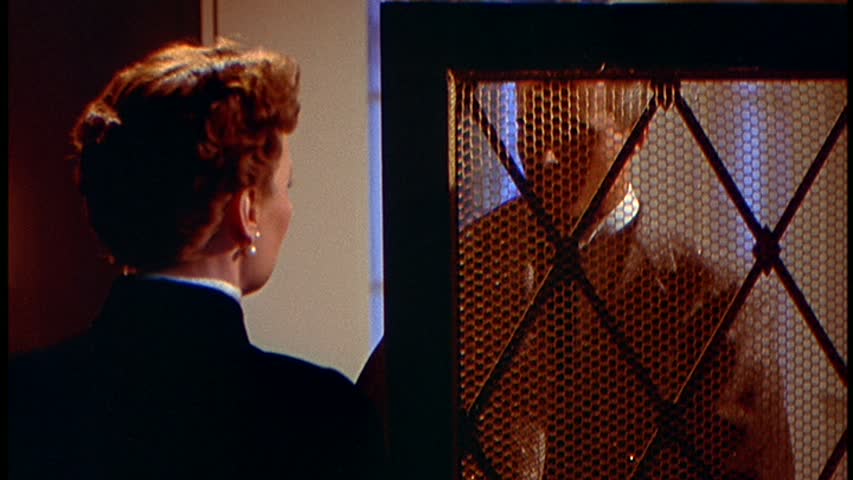
Douglas Sirk, ´All that Heaven Allows´, still. A paravent dividing mother and son resembles a prison.
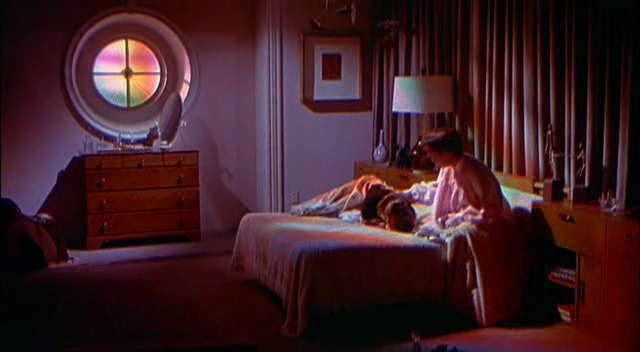
Douglas Sirk, 'All that Heaven Allows', still. The daughter’s bedroom, features a pre-new age window that channels light into a prism. But instead of providing healing properties, the prism’s colourful lights are projected onto the characters and illuminate their misery in a colorful rainbow.
Like Cynthia’s charged settings, Sirk invokes the power of decoration from the point of view of imbalance, of the impossibility of an authentic “materialist” reality, but how aspects of “spontaneous arabesque” can be channeled into novel catalysts of affect.
Shannon Bool
THE GRAMMAR OF SUBSTANCE (I)
Within the framework of my research into Asger Jorn´s writing and thinking I organize public sessions with special guests at a variety of venues. The guest´s practice, knowledge, insights, or responses are informative to my research, or steer the direction I take on a particular topic. The sessions also often respond to the context of the hosting institution, or to a specific request. Making the sessions public is a way to share and enter into a dialogue with the audiences.
‘The Grammar of Substance’ was a talk by Canadian artist Shannon Bool (lives and works in Berlin) and myself in the framework of the exhibition ‘Shana Moulton – episodes from Whispering Pines’ at Nieuwe Vide, Haarlem. The talk took place on Sunday 16 March 2014.
Shana Moulton is an American performance and video artist who lives and works in New York. Her work is very adequately described by Marco Antonini: “Shana Moulton’s videos and performances are in many respects the product of her own fears and anxieties. Surrounded by hysterically colourful and studiedly kitsch scenarios, her filmic alter ego, Cynthia, is obsessed with her health and well-being. In Shana/Cynthia’s hands, inoffensive and awkward medical and orthopedic devices are transformed into surrealistic machines and gateways to parallel realities that are directly linked to her perceived psychological and physical illnesses. Her adventures mirror the insecurities of whole generations while also exploiting stylistic forms and tropes excavated from the recent history of mass-mediated culture.” http://www.museomagazine.com/SHANA-MOULTON In my talk I connected Asger Jorn’s universal ornamental language, or his ideas on ornamentation, to Moulton’s the symbolic and cosmological references. Shannon Bool’s contribution is discussed on this blog in the post ‘The Grammar of Substance II’.
What is an ornament?
The irrational, magic, the attribution of value and value creation, media critique and ornament and decoration are all aspects in Moulton’s work, and some of Jorn’s favourite subjects, so I decided to discuss Moulton’s work through the lens of Asger Jorn’s text ‘What is an ornament?’ from 1948. Throughout the text run a couple of recurring concerns in Jorn’s (earlier) writings: a critique on functionalist architecture, a critique on capitalism and prefabrication, his belief in the interconnectness between things (which leads to the necessity for what he called ‘a living art’), and his firm belief in the capacity of the artist to create the best possible environment for mankind.
The first paragraph of ‘What is an ornament?’ is called ‘On the life and movement occurring in all substances’. It starts out stating that “Matter consists of substances in motion that have different composition values and consistencies. At the interface between two substances engaged in mutual motion, we find the catalyst for that which we describe as the wave formation of matter.” Jorn importantly adds that “There is a cohesion that exists within the reaction forms inherent in different substances and this includes that of mankind.”(Please note that in this blog entry all English citations from ‘What is an ornament?’ come from Fraternité Avant Tout– Asger Jorn’s writings on art and architecture, 1938-1958, ed. Ruth Baumeister, 010 Publishers, Rotterdam, 2011).
Furthermore, Jorn addresses various aspects of the ornament:
The first point Jorn makes is that ornamentation is the geometry of life (of matter) itself. He then explains the difference between a naturalist and a materialist way of working, eventually stating that for the material artist, nothing (not even thought processes) can be immaterial in the deepest sense of this word. I will go into these issues and their implications later on. He also discusses what he calls “the tragic history of the ornament in art”, asserting that there are two different interpretations of the ornament in art:
- The ornament as monumental decoration which seeks to form a finite whole, and becomes static ornamentation. Examples are: classicist Renaissance art, and various forms of neo classicism.
- The ornament as spontaneous arabesque, which manifests itself as a set of elements within a greater whole. This is ‘moving’ and hence dynamic ornamentation. It is about organic cohesion. To be found in the art forms of all primitive people, art of the Orient, prehistoric until Romanesque monumentalism set in. From that moment on there has been a constant reappearance and disappearance of dynamic ornamentation (Baroque, Rococo, Empire, Art Nouveau. (Jorn: Static forms have a tendency to become dynamic because dynamic art is the natural way of things)
Jorn then points at the fact that art itself (in the western world) became split into two categories – the higher, or classical art and folk/banal or spontaneous art. He connects the appearance and disappearance of static and dynamic ornamentation to economic and political changes. This basic point, that the way we deal with ornamentation is influenced by economic and political factors seems to be wholeheartedly confirmed by various contemporary scholars, including Professor Jörg H. Gleiter, who is specialized in the history of the ornament. In ‘Ornament: The Battleground of Theory’ he writes: “Every time the question of ornament arises, it indicates a fundamental structural change which is therefore seen as a crisis and a major upheaval in culture. It is precisely in times of radical cultural change that the question of ornament resurfaces, such as for example at the beginning the 20th century with the transition from production by hand to production by machine, or in the second half of the 20th century with the transition to the structural and post-structural processes of postmodernism. Today too, on the cusp of the change from the mechanical to the digital age, the talk is of the “revival of ornament”. Gleiter’s text can be downloaded here: ”https://www.academia.edu/357179/Ornament_The_Battleground_of_Theory
I would like to return now to the first point that Jorn makes in his text: ornamentation is the geometry of life (of matter) itself, it is “the grammar of substance”. The examination and negotiation of the relation between the materiality of the art work and its discursive meanings, between matter and mind in general, were a central concern throughout Jorn’s practice. The first paragraph of Jorn’s ‘What is an ornament?’ starts out stating that “Matter consists of substances in motion that have different composition values and consistencies. At the interface between two substances engaged in mutual motion, we find the catalyst for that which we describe as the wave formation of matter.” Think of the patterns that the wind creates in the clouds, or in the sand, or the way that sound and light interact etc. Jorn importantly adds that “this cohesion that exists within the reaction forms inherent in different substances, includes that of mankind.”
Jorn illustrates his ideas with several images, including the one below for which he provides a long caption saying: “An ornament? No, a drawing of the orbital paths of a radium atom. Within the most basic elements of matter, ornamentation exists as an objective reality and facilitates mankind’s subjective appreciation of all forms of ornamentation, which is nothing less than the grammar of substance; the geometry of life itself.”
The examination and negotiation of the relation between the materiality of the art work and its discursive meanings, between matter and mind in general, were a central concern throughout Jorn’s practice. The first paragraph of Jorn’s ‘What is an ornament?’ starts out stating that “Matter consists of substances in motion that have different composition values and consistencies. At the interface between two substances engaged in mutual motion, we find the catalyst for that which we describe as the wave formation of matter.” Think of the patterns that the wind creates in the clouds, or in the sand, or the way that sound and light interact etc. Jorn importantly adds that ‘this cohesion that exists within the reaction forms inherent in different substances, includes that of mankind.’
On another page Jorn combines a representation of the earth’s rotational curves, a cross section of the human muscle, the map of a Mediaeval town and ‘Australian sand decoration’.
His caption with the first image is:“A Flower? No, a representation of the earth’s rotational curves within its phases of movement. In every aspect of matter from the smallest atom to the whole universe, we find the same pattern of movements as those created, not just flowers but mankind itself. Everything is reflected within everything else.”
Jorn’s remarks about the interconnectedness of things and humans, of matter in general, about how “everything is reflected in everything else” made me think of some of the images from Shana Moulton’s ‘Whispering Pines 4′, where her alter ego Cynthia goes to see a spiritual healer for her hands and gets sound medication.
Her head shells produce a warm male voice and while listening I caught phrases such as “my true and dynamic nature” , “perpetually transcending” “I’m intimately connected to everything” “”I am more than my physical body. I am limitless.” The cure seems to work, and we soon see Cynthia in various scenarios that literally visualize the words of the healing voice:
The Golden Spiral (which Moulton refers to in the video) represents two well-known shapes in sacred geometry: the golden mean or golden ratio (phi) spiral and the Fibonacci spiral. The unique thing about Phi is that it seems to be a geometrical blueprint for life itself and can be found incorporated in all known organic structures; from the bone structure of human beings to the seed pattern of a sunflower. (think again of Jorn: everything is reflected in everything else)
Materialisms
Let us for now return to Jorn’s theory of materiality, which is inspired by thinkers such as Karl Marx, Susanne Langer, Gaston Bachelard, and the physicist Niels Bohr – all of whom emphasized – in different ways – the role of physical matter in human thinking. In ´What is an ornament?´ Jorn states (as always, from the perspective of artistic practice) that “the materialist acknowledges that as a human being he is part of the materials and substances, can not be separated from nature.” For the materialist artist, Jorn says, human thought processes are instigated by the substances themselves, and are synonymous with the reaction form which these substances have, because thought (which in itself is immaterial in nature) cannot avoid the natural laws pertaining to matter. For the material artist, nothing (not even thought processes) can be immaterial in the deepest sense of this word.
I would like to relate these thoughts to the interaction between ‘Whispering Pines Cynthia’, and the objects from the health industry, the overlooked marginalia, and the poor thrift store objects that she surrounds herself with.
In the majority of the ‘Whispering Pines’ works, to Cynthia’s surprise many of the objects turn out to possess totemic power, agency lies in the objects, and their properties and associations acquire the power to shape the narrative. And even though the results are never what Cynthia or the viewer might expect, the objects’ magic sometimes even turn out to possess healing powers.
To Asger Jorn, and other members of the international Cobra group (1948-1951) which he helped establish, the idea to look at the world and depict it through a child’s perspective as it were, was of great importance. In the case of Jorn it was a decision informed by a desire for (social) change. I wondered in what way this also could apply to Shana Moulton. In the light of this it was interesting to read that in one online interview, Shana said her tutors at De Ateliers in Amsterdam were very critical of her work, and asked her if she was trying to make children’s television. Perhaps they were referring to Shana’s use of the idea of totemic power in objects, to her depicting a world of animate things rather than passive objects?
Contemporary philosopher Jane Bennett however, in her publication “Vibrant Matter – a political ecology of things”, actually tries to actively remind us of the capacity we had as a child to think of things animate. Bennett stresses the urgency to rethink “the idea of matter as passive stuff, as raw, brute, or inert”, and claims that it is time “to acknowledge that the world isn’t divided into dull matter (it, things) and vibrant life (us, beings). The quarantines of matter and life encourage us to ignore the vitality of matter and the lively powers of material formations, such as the way omega-3 fatty acids can alter human moods or the way our trash is not “away” in landfills but generating lively streams of chemicals and volatile winds of methane as we speak.” She argues that politics needs to be ‘ecological’, not in the classical sense of that term (i.e. focused on stable interdependencies between species) but in a more ‘vitalist’ sense that de-privileges humans. “By ‘vitality’”, she explains she means, “the capacity of things – edibles, commodities, storms, metals – not only to impede or block the will and designs of humans, but also to act as quasi-agents or forces with trajectories, propensities, or tendencies of their own.”
It is exactly this “vitality of matter” that Shana Moulton is emphasizing in an artistic and humorous way in her work, and which also seems of crucial importance in Jorn’s words, and Jorn’s works – both in terms of subject, and in terms of dealing with the material.
Based on ‘What is an ornament?’ and other texts by Jorn, I would conclude that according to him, the material world cannot be seen as passive, pre-shaped objects waiting for active subjects to observe and describe. It has its own agency and is constituted partly by its own force and partly by the way we perceive it.
Holism/New Age
I find it important to stress that with the parallels that I draw between Jorn and Shana Moulton’s work (who is obviously flirting with New Age) I have no intention to communicate that Jorn’s notions on interconnectedness have anything to do with holism. Philosopher Tim Morton critiques holism for “being ironically opposed to a truly profound ecological view”. He says: “The reason is simple: when you start to think about how according to holism the whole is always greater than the sum of its parts. This means that at some level there is already fragmentation. It also means that the parts are ultimately replaceable. This gives rise to all kinds of ethical consequences, for instance the idea that it doesn’t matter much to Planet Earth if humans become extinct, or even the idea that humans are a kind of virus—a whole could have faulty components that might need to be cleansed or replaced.” http://philosophyinatimeoferror.com/2010/05/10/tim-morton-the-interview/Morton’s critique explains why I felt a great need to come to terms with Shana’s tongue-in-cheek flirtations with New Age, during the preparations for the talk at Nieuwe Vide, as I have no intentions to create the impression of Jorn as ‘New Age avant la lettre’!.
However, New Age takes a special place in Californian culture. To refer to a quote that Shana Moulton send me from the publication The Alchemy of Trash by Erik Davis: “(…) spirituality, for us (Californians) anyway, takes place in the midst of the market and its commodified fantasies. This feedback loop is especially true in California, where esoteric spirituality has long been a part of a feverish and mercantile popular culture rife with trash. What religious seeking and California culture share most essentially is an investment in fantasy — fantasy not simply as “illusion,” but as the forms that fuse imagination and desire. As both ironic and populist fans of low-brow culture can attest, the ferocity of fantasy can lend a delirious dreamlike power to corny things like UFO cults and commercial entertainments like B-movies or comic books.”
It is in this culture that Shana’s work needs to be contextualized, in relation to which, as she also explains herself in our conversations “her goal has been to ride some line between absurdity and sincerity.” I would conclude that – the core question apparently being whether the whole is a sum of parts, or an undividable whole – Shana eventually seems to undermine the ‘holistic’ perspective of New Age. As Cynthia always seems surprised about the ‘totemic’ power of the objects, doesn’t seem to have any control over the totemic actions taking place, the ‘vibrancy’ of the objects, to speak with Jane Bennett, seems intrinsic, and not added to the existing object. This is a crucial thought for Bennett, which indicates that the whole is not the sum of parts, but that everything is already there.
Also, Shana’s aesthetics flirt with New Age, but her very rudimentary video technique, quick solutions and spontaneous-looking editing process, undermine and contrast with the New Age ‘all-is-beautiful and harmonic aesthetics’ at the same time. Here, we see no harmonious synthesis, but a disjunctive one, that makes it impossible to complete immerse in the spirit of New Age. Let me conclude by observing that Asger Jorn’s attitude is probably best characterized as ironic, humorous, playful, and self-contradictory and that luckily, Shana Moulton’s ornamented universe seems to have come into existence with a similar attitude.
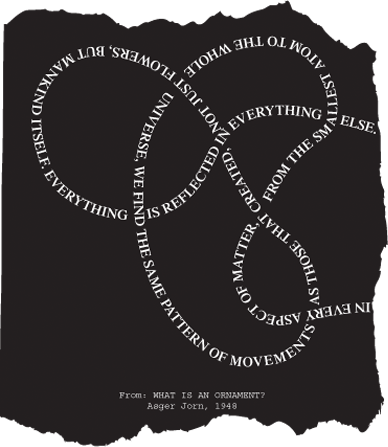
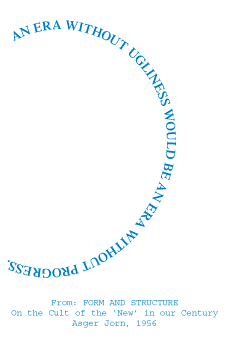
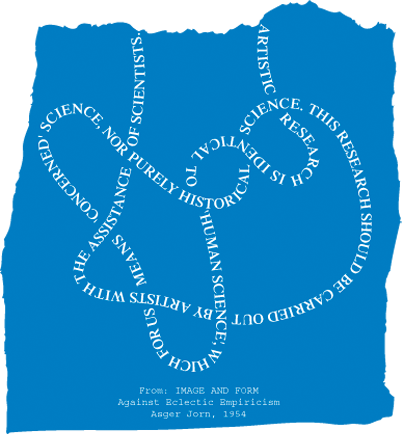
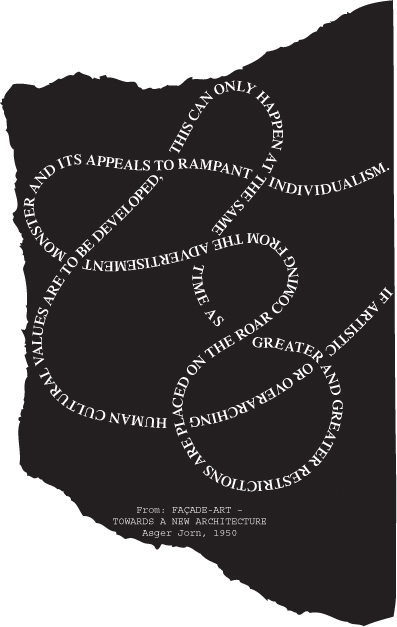
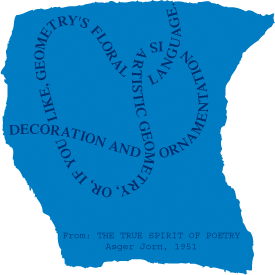
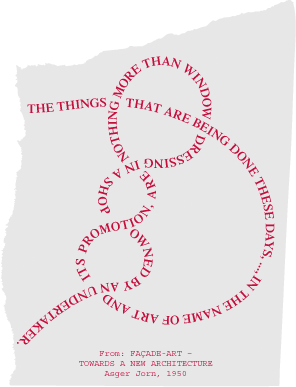
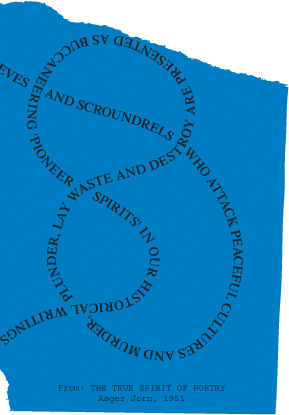
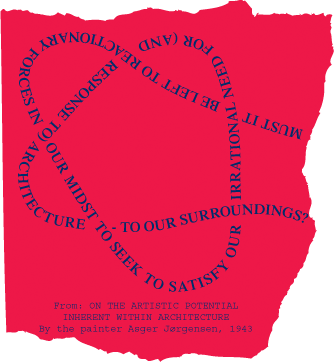
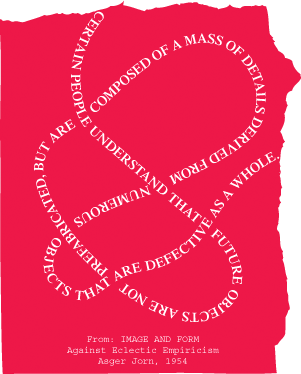
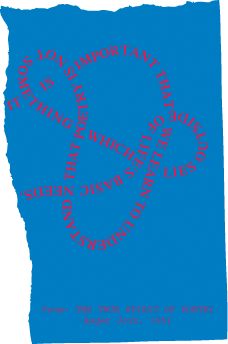
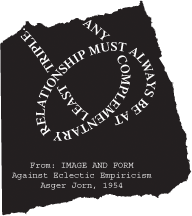
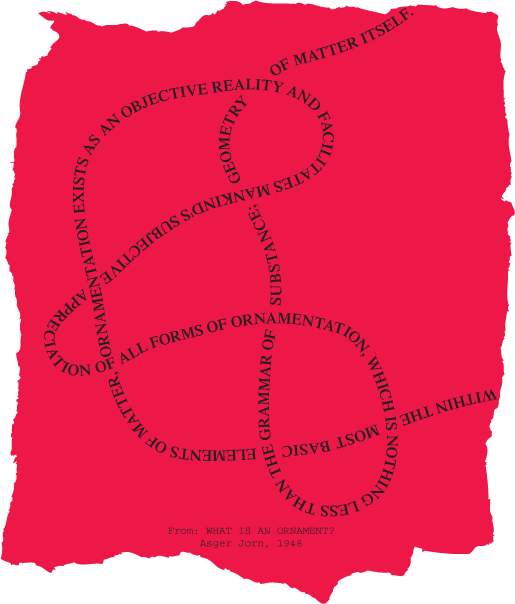
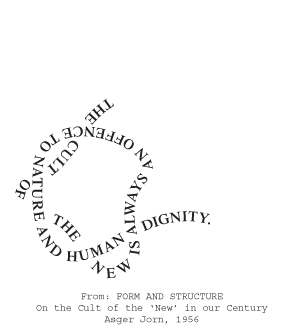
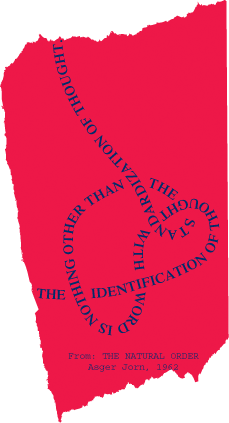
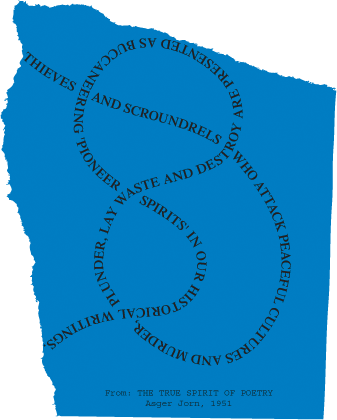
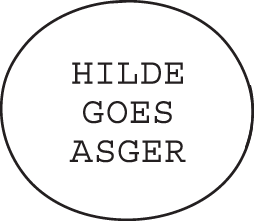
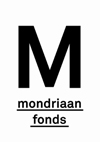
![775t[1]](https://www.hildegoesasger.org/wp-content/uploads/2015/07/775t1.jpg)
